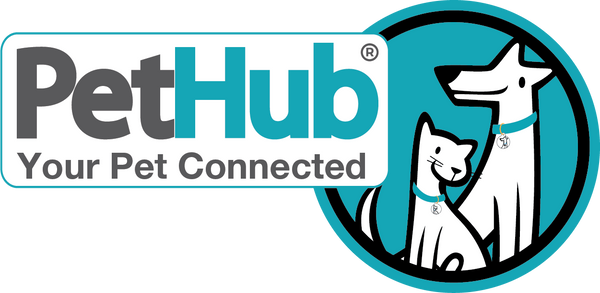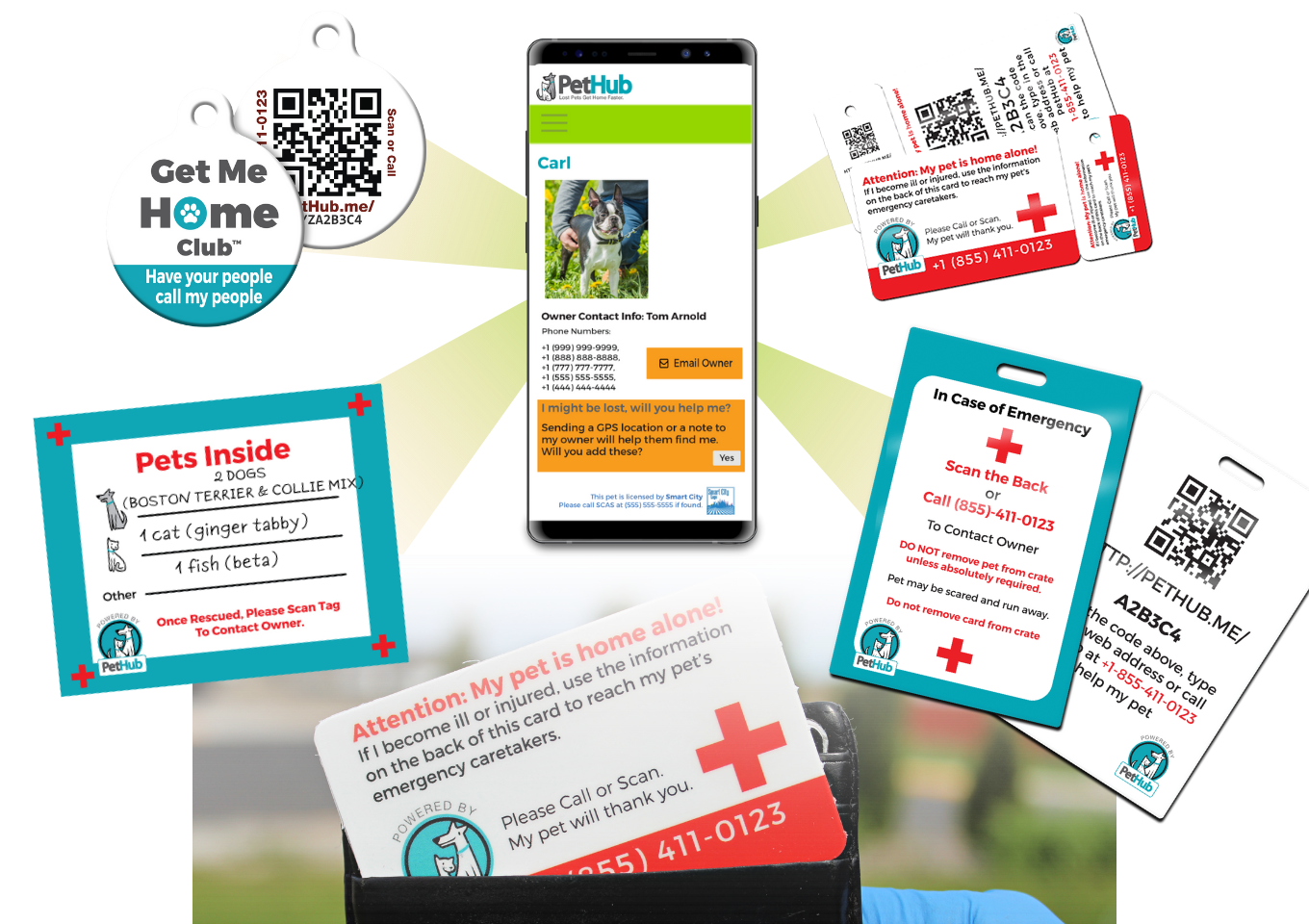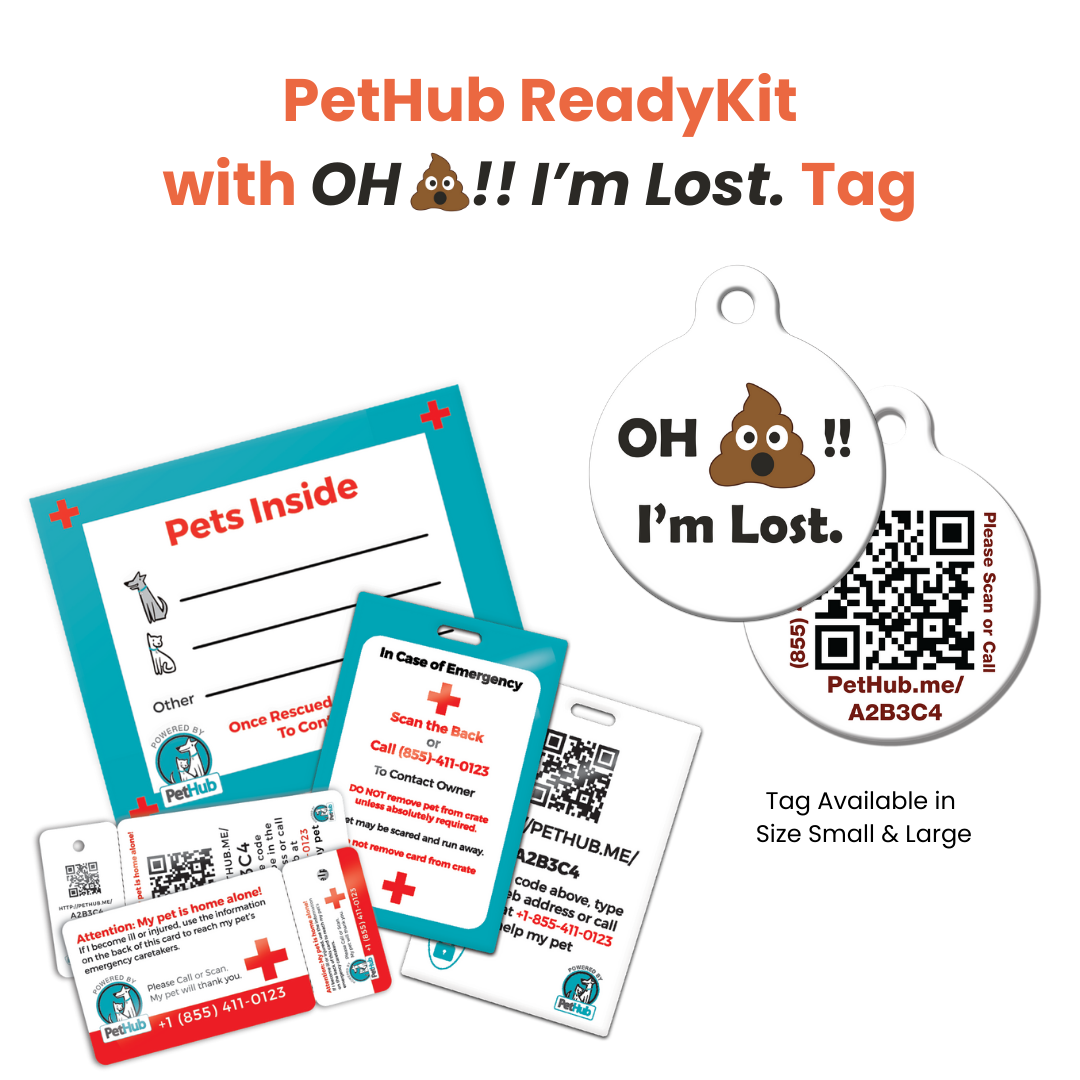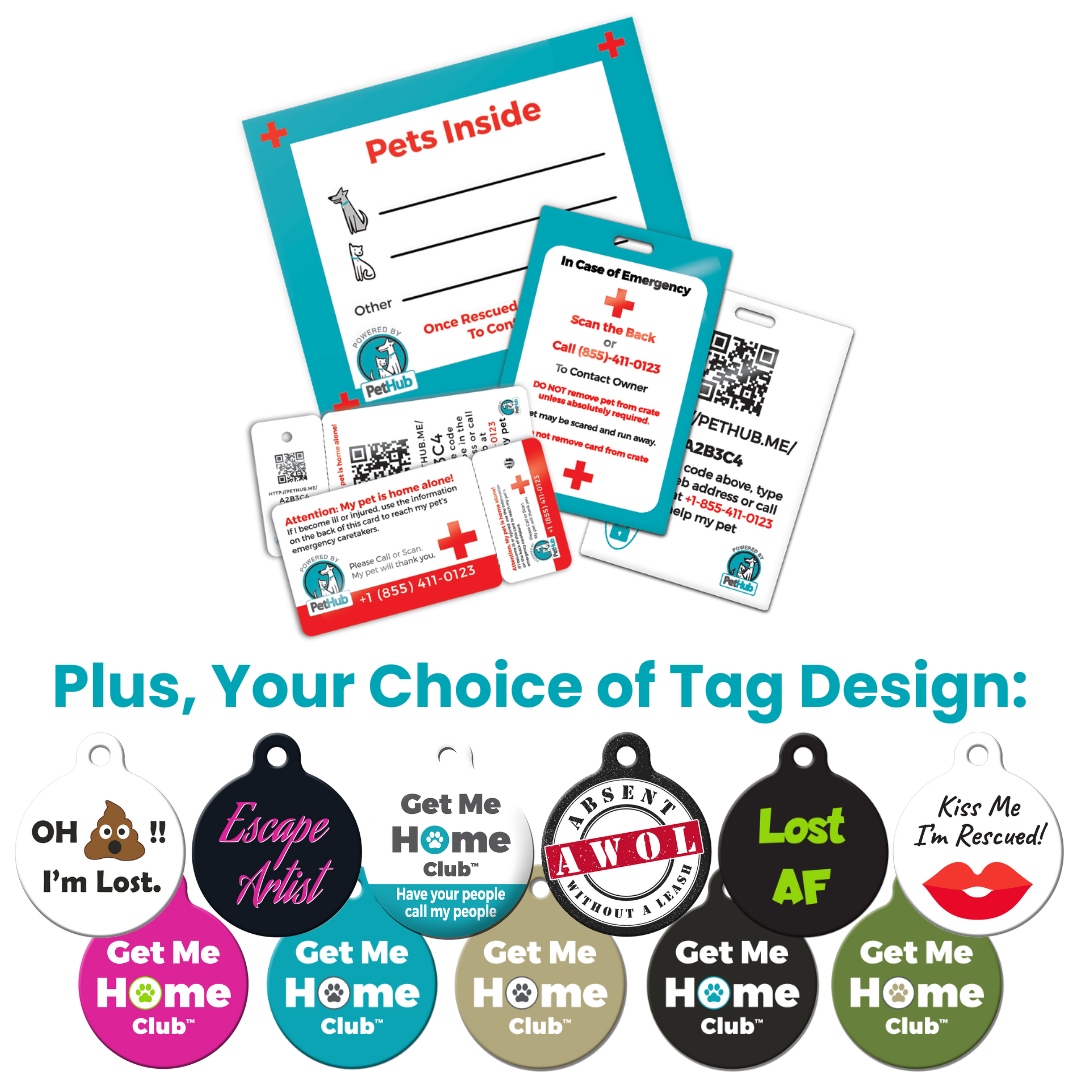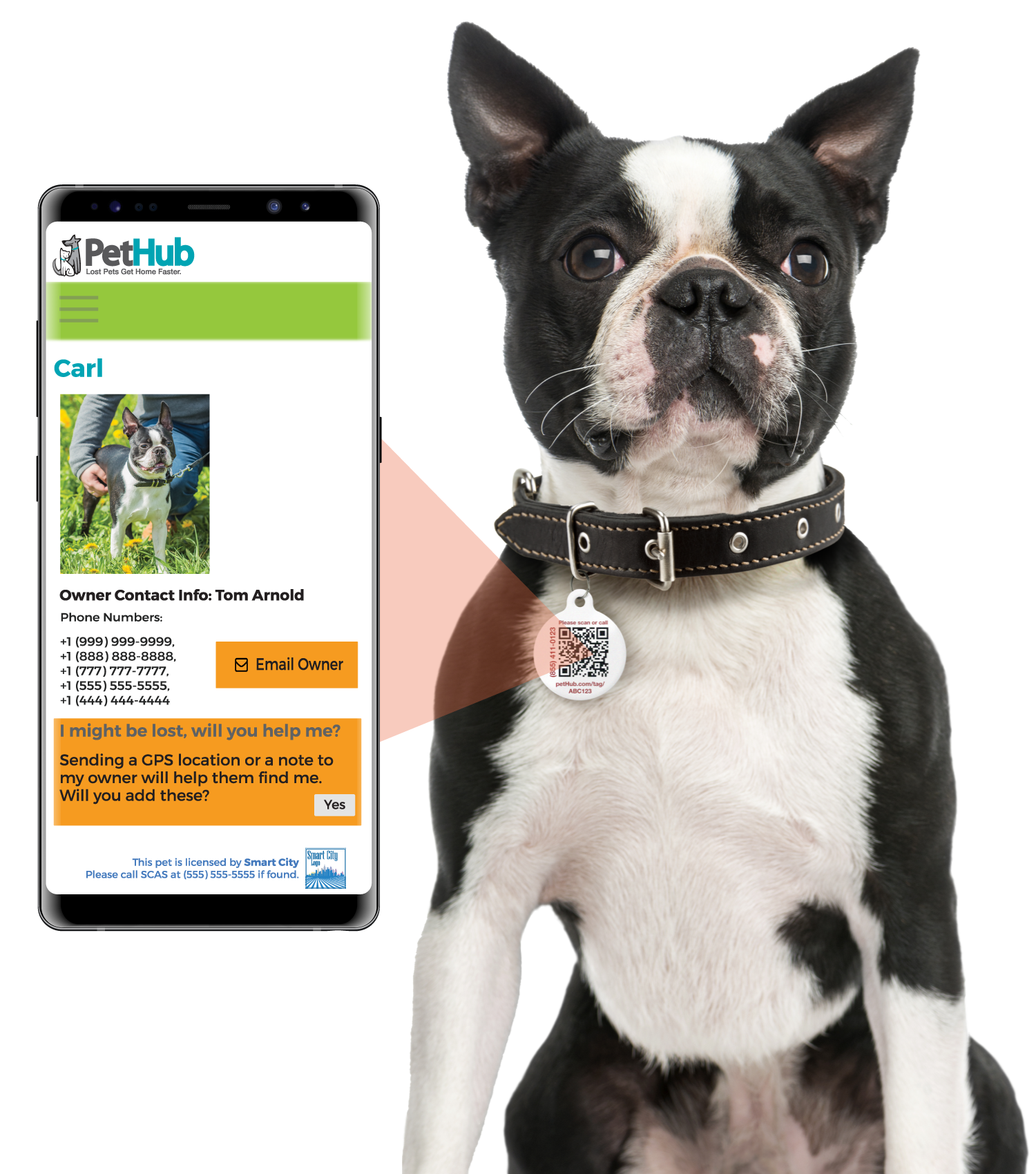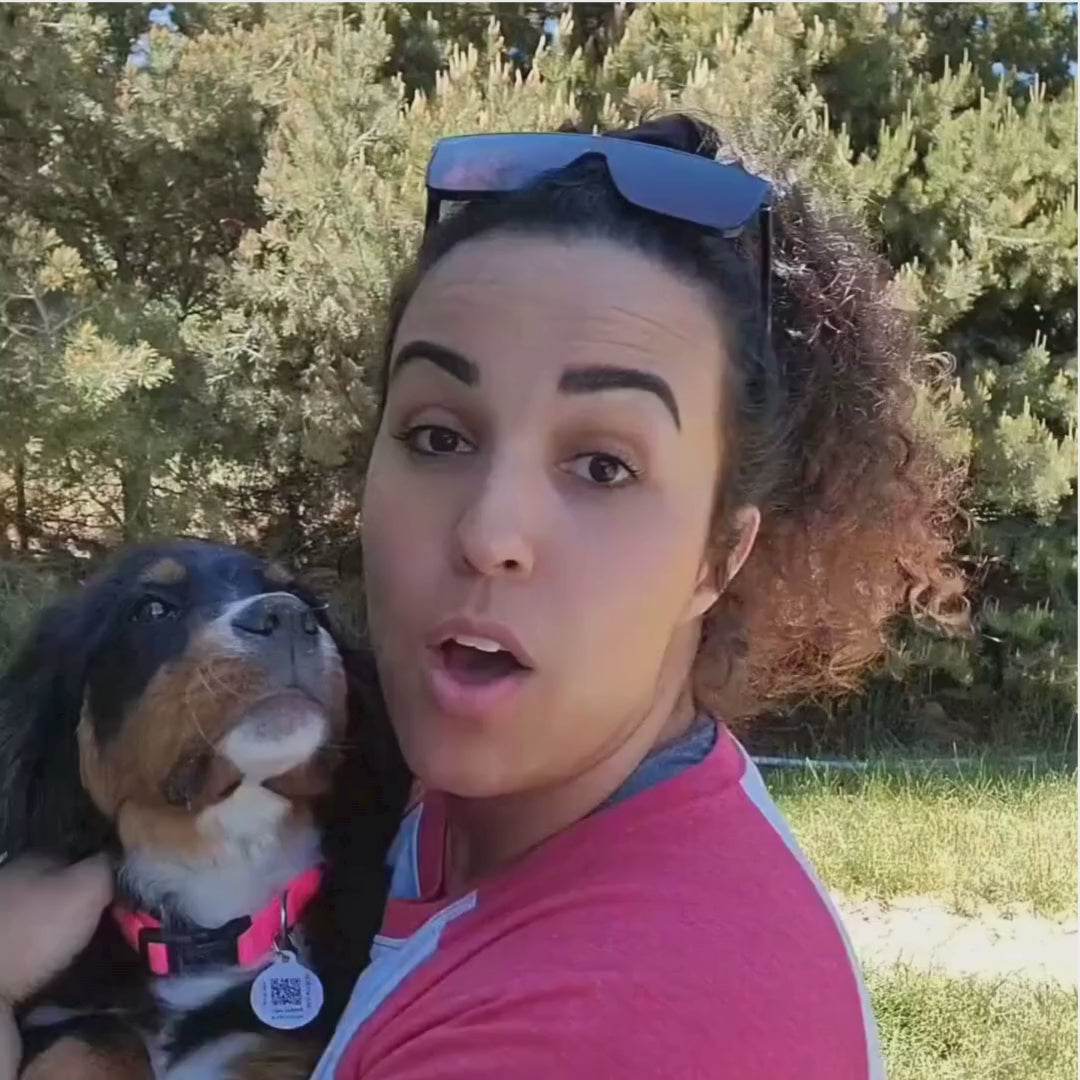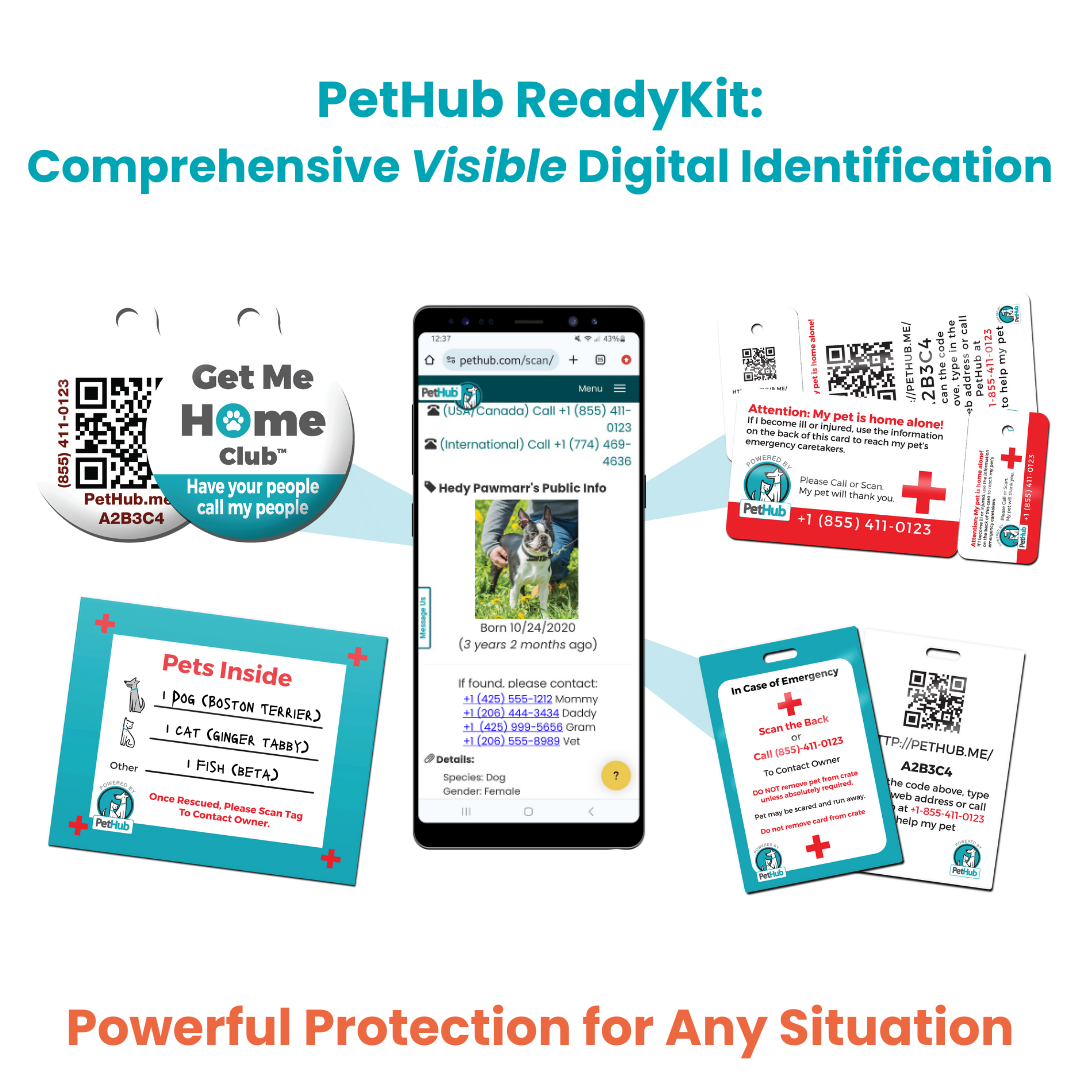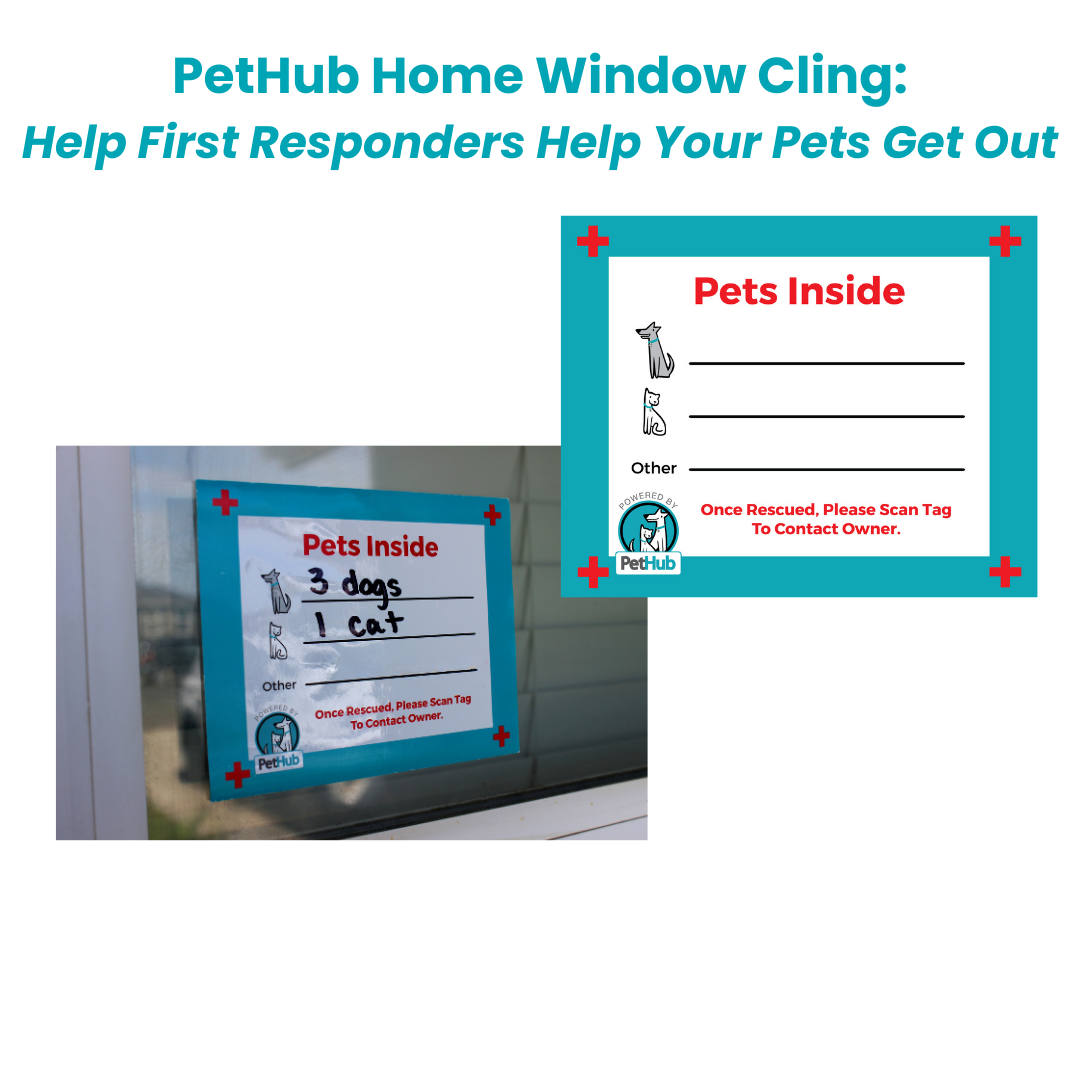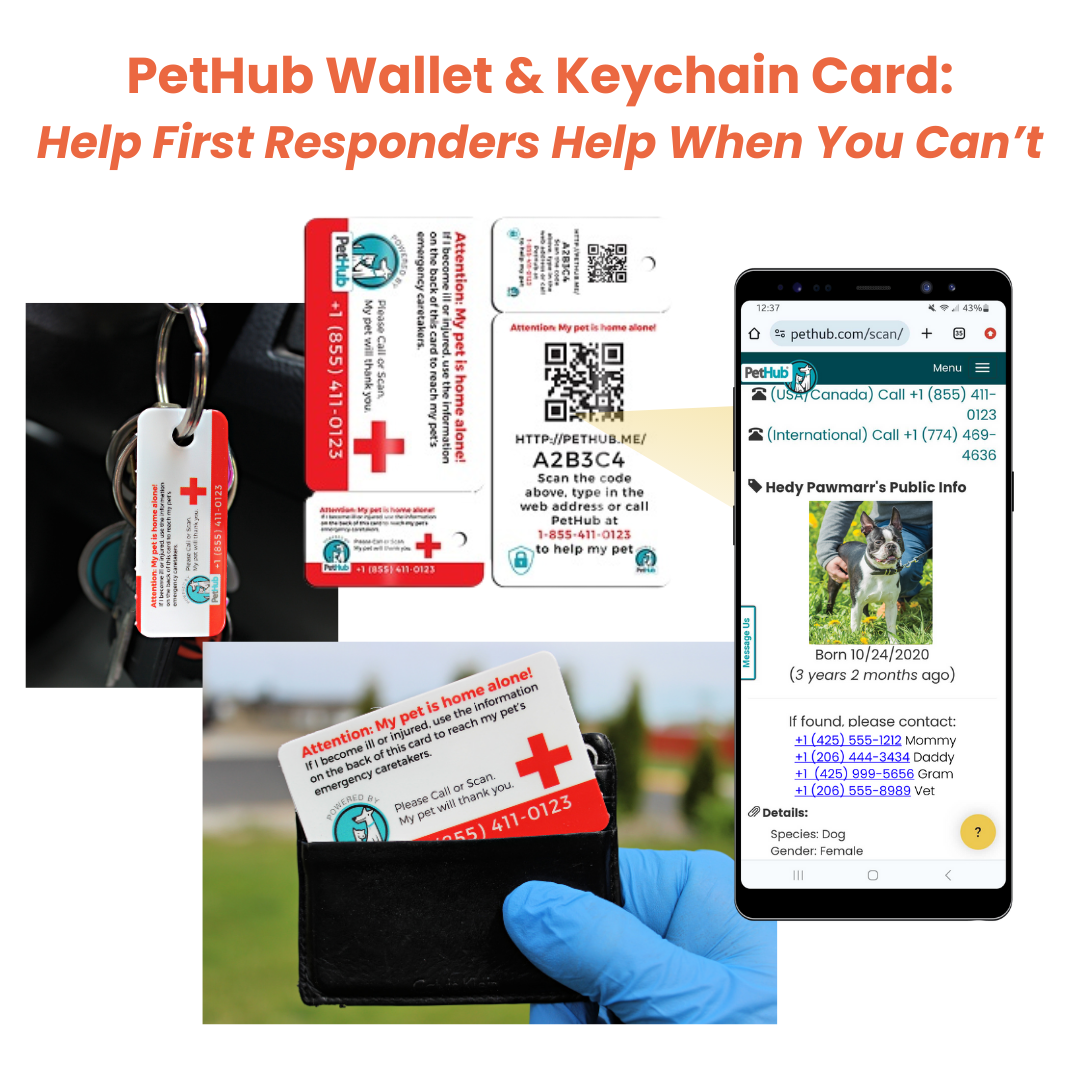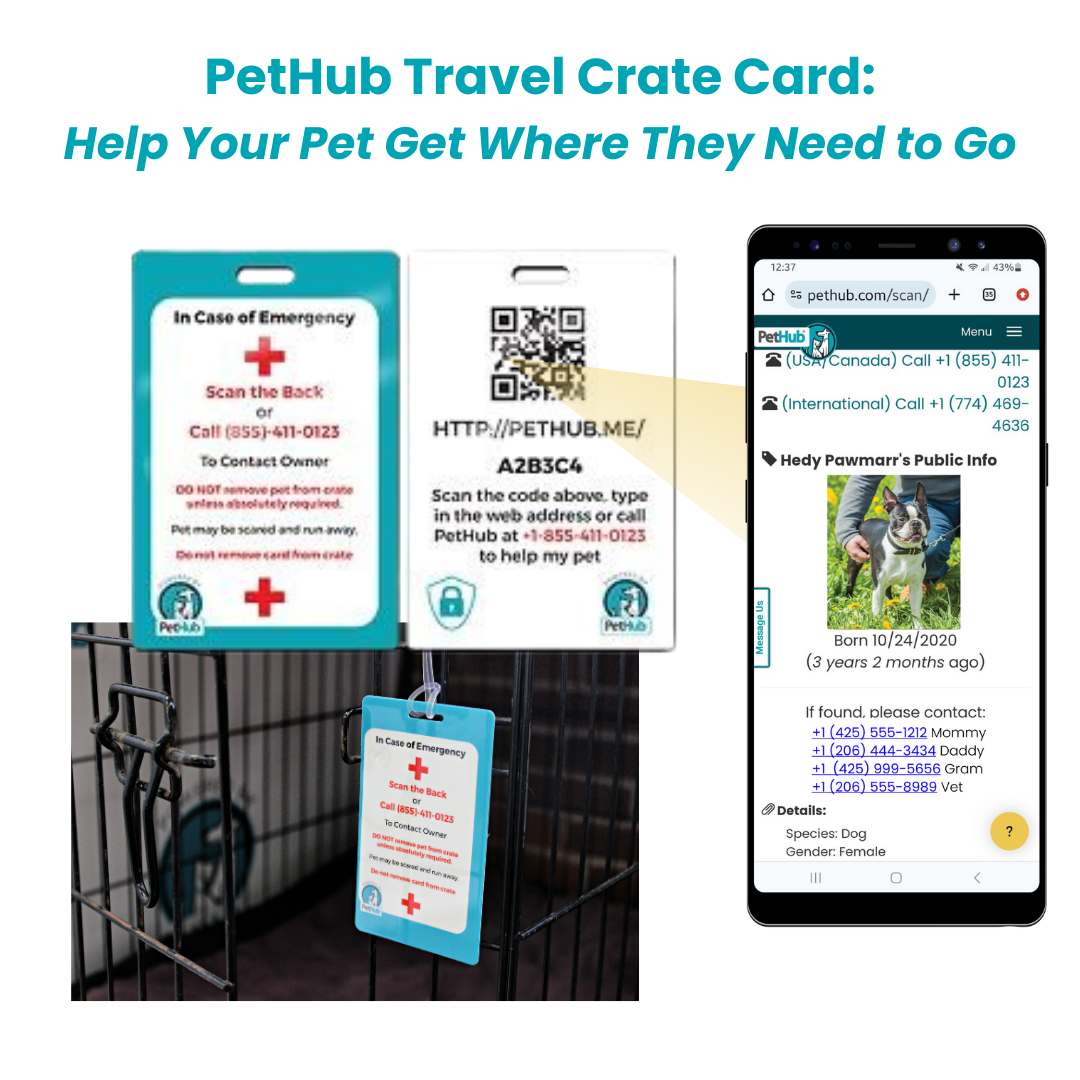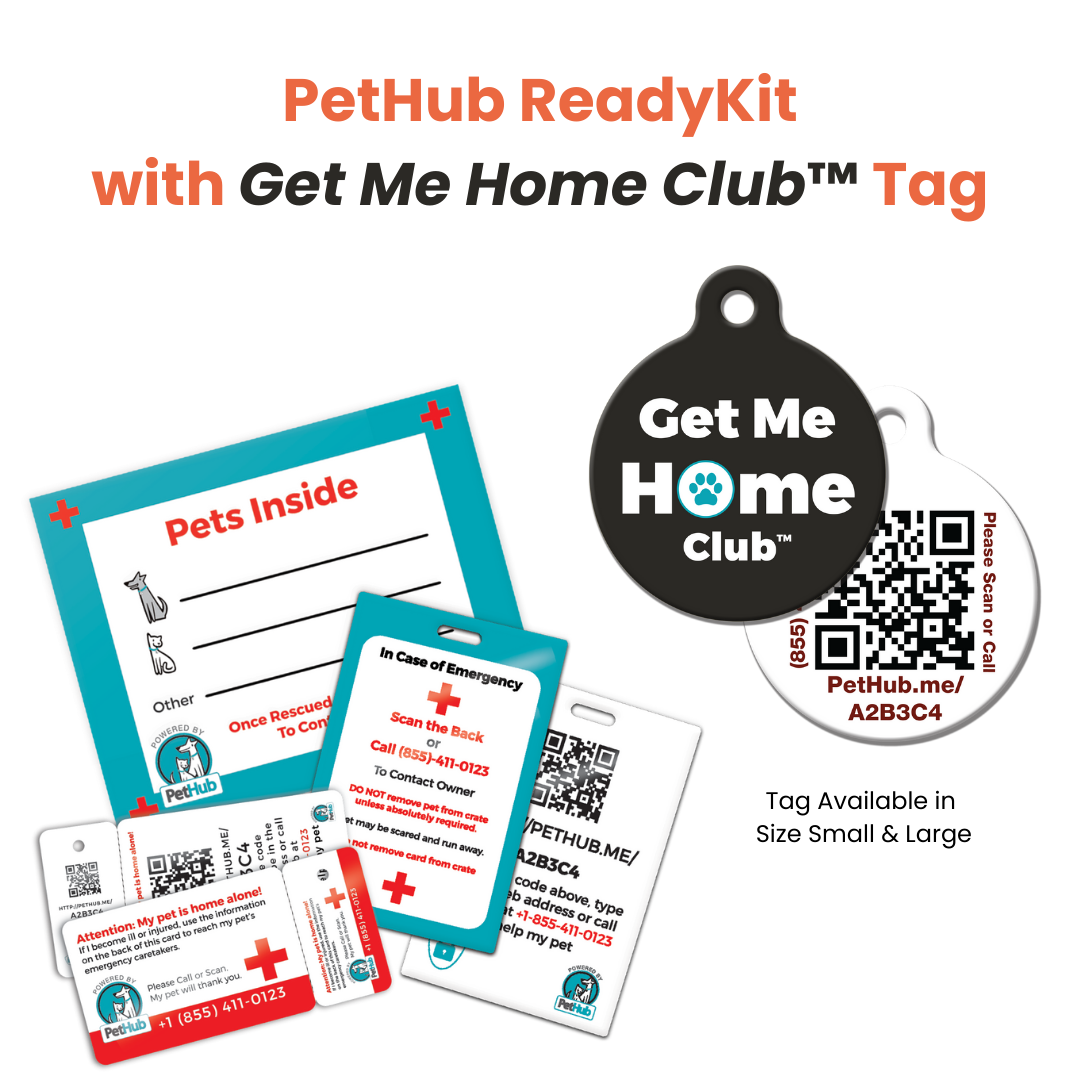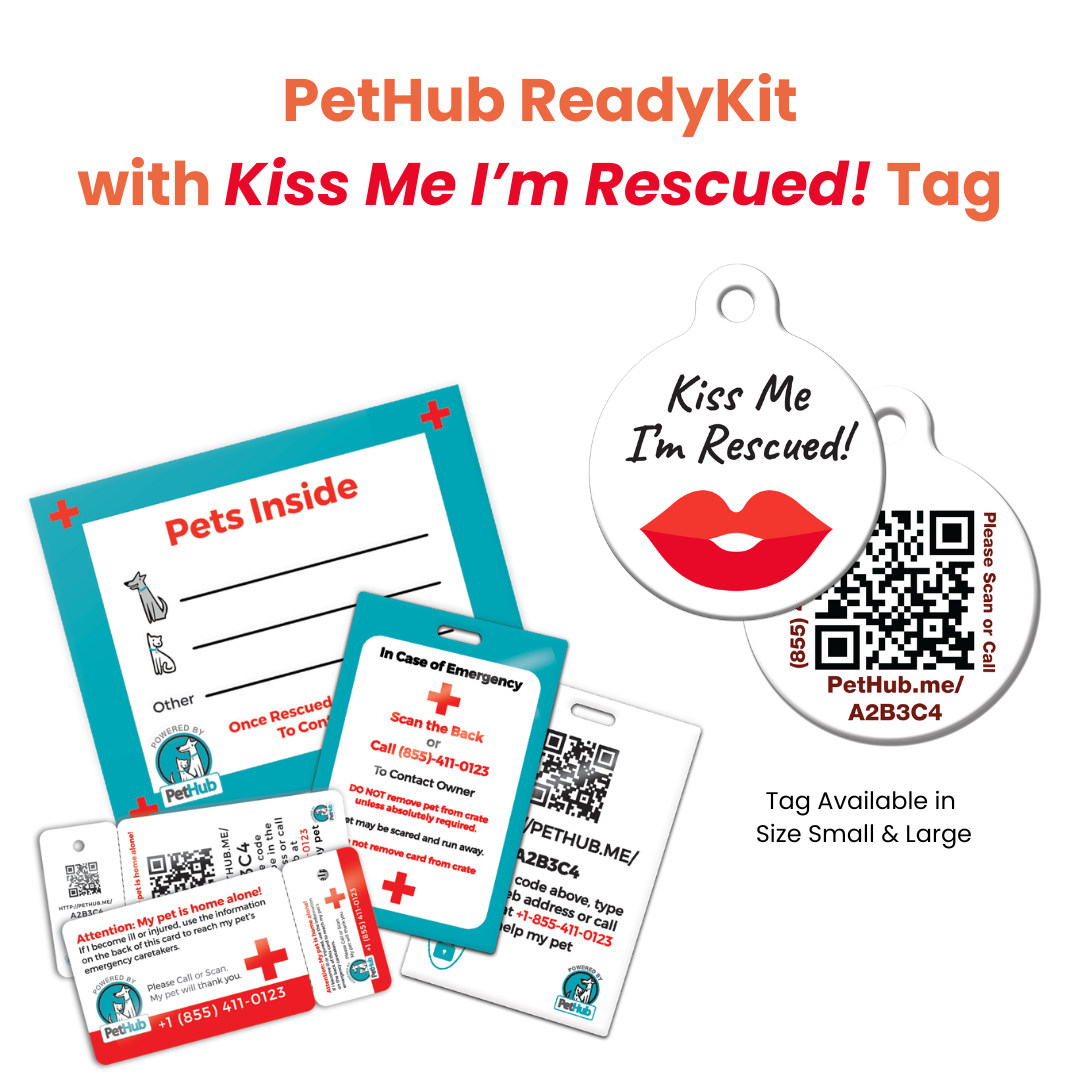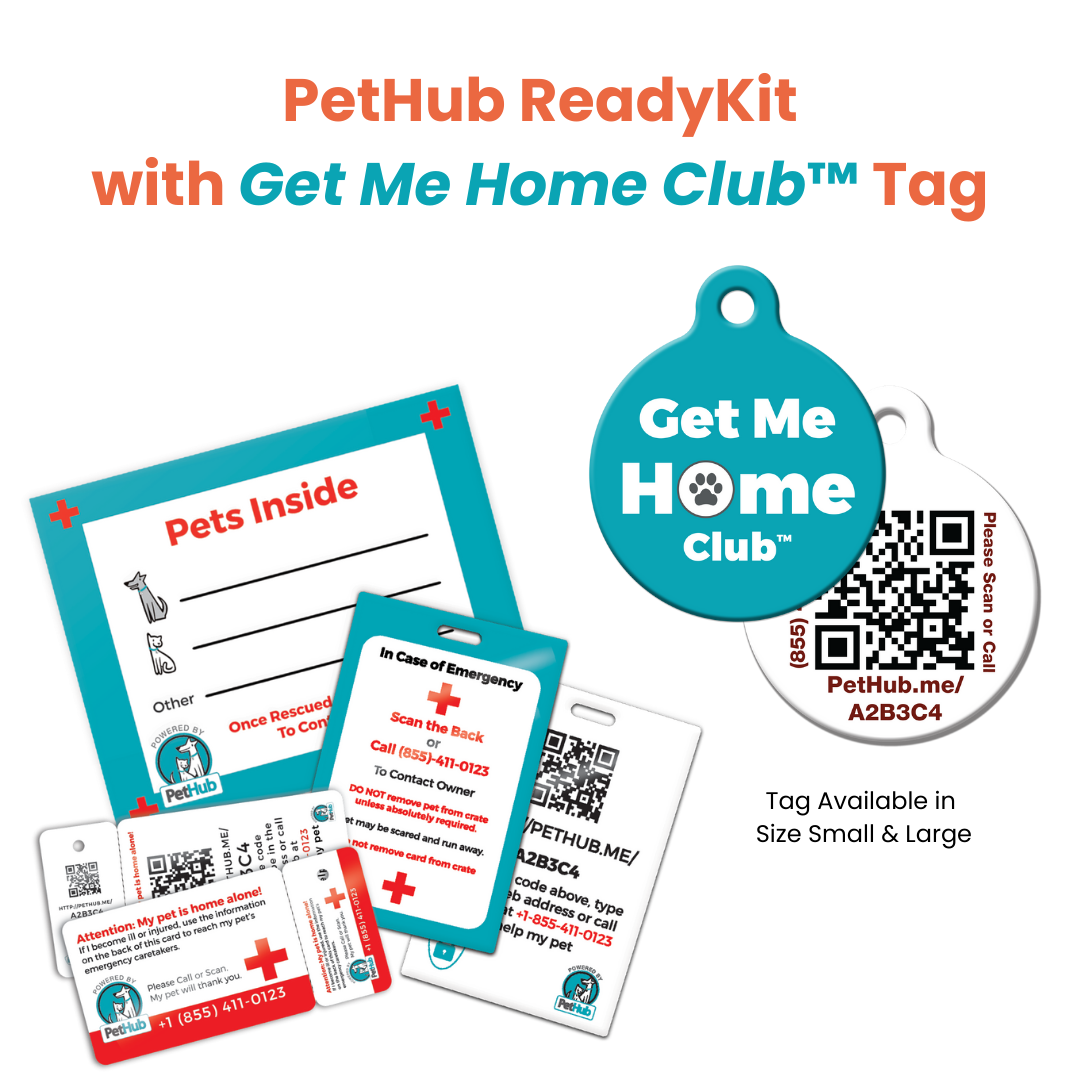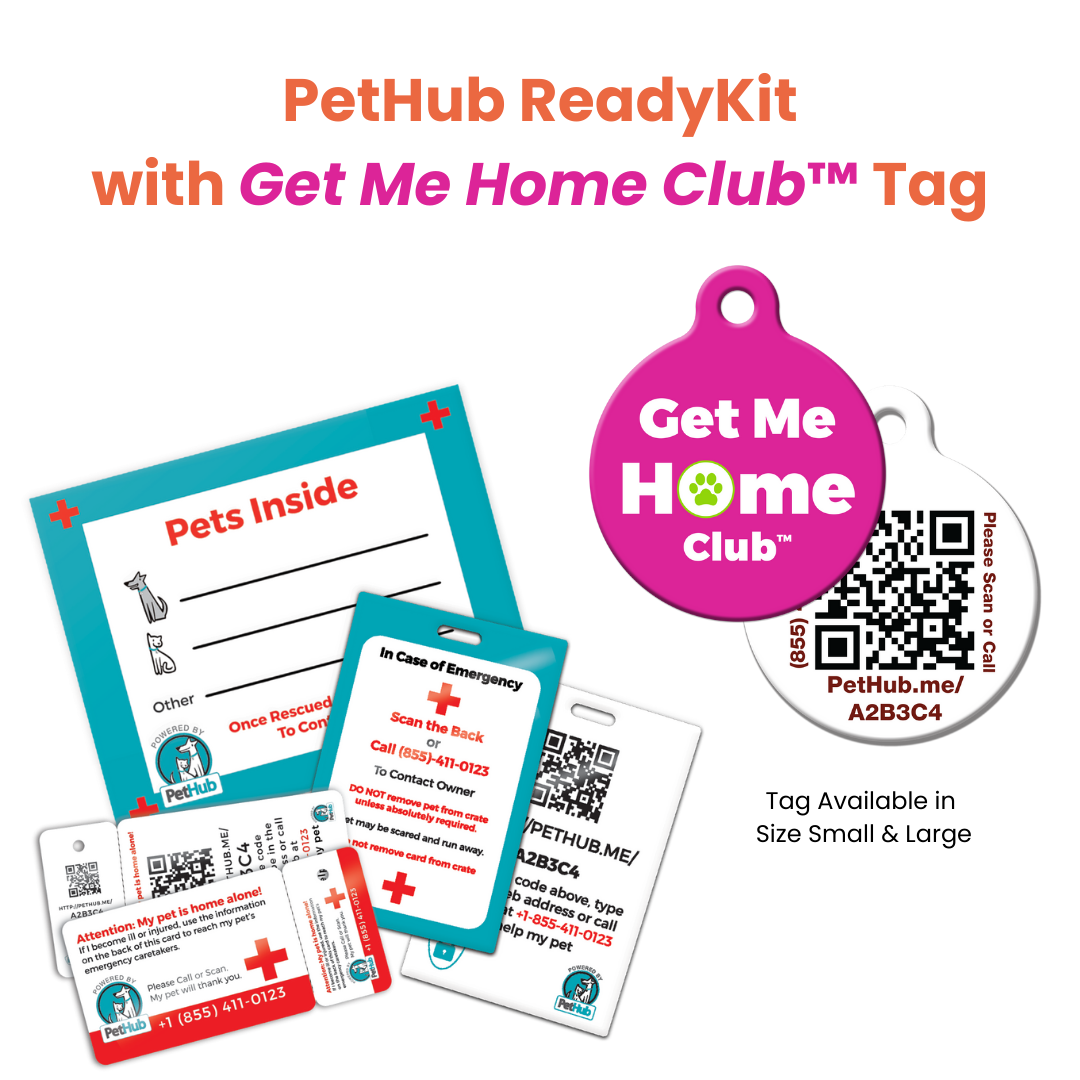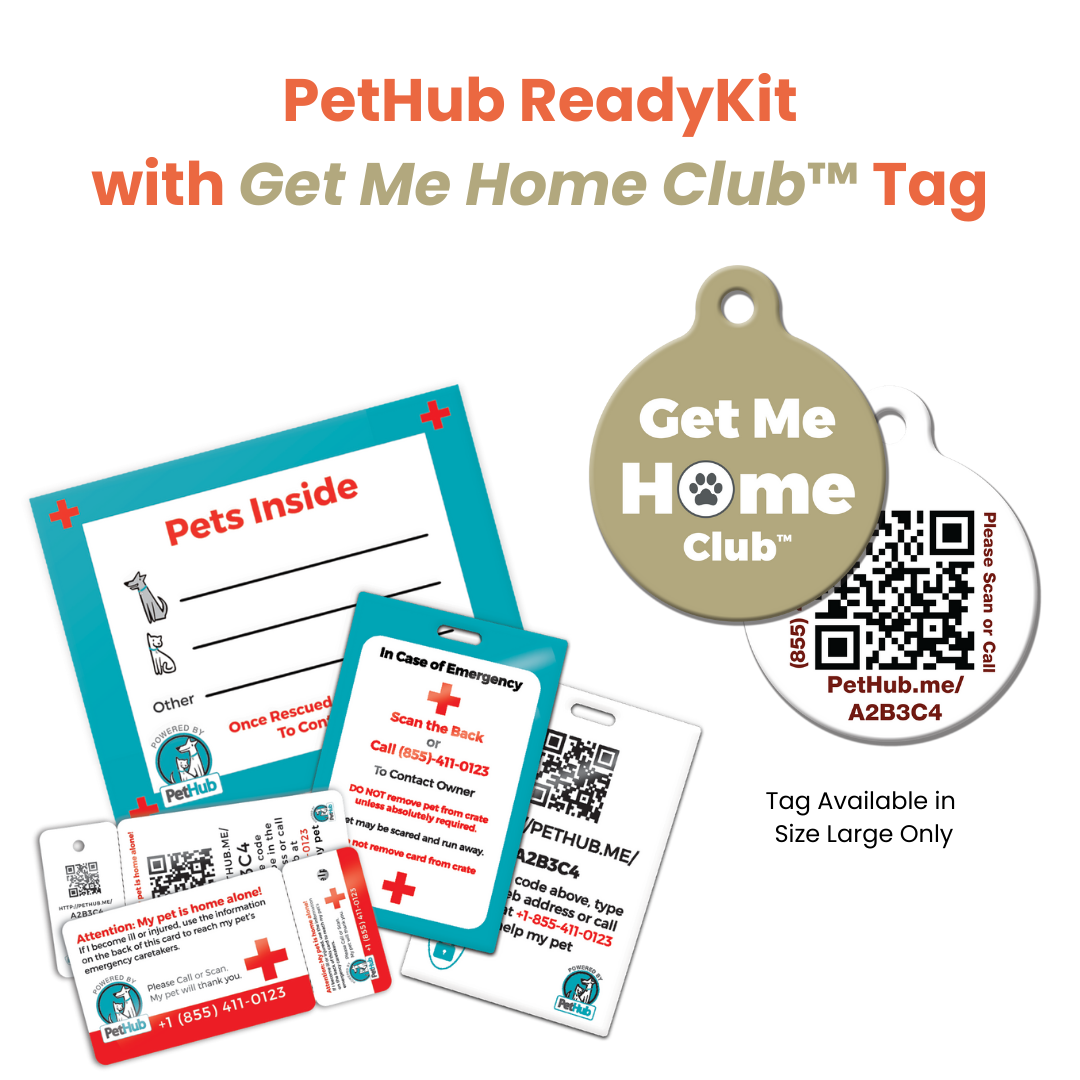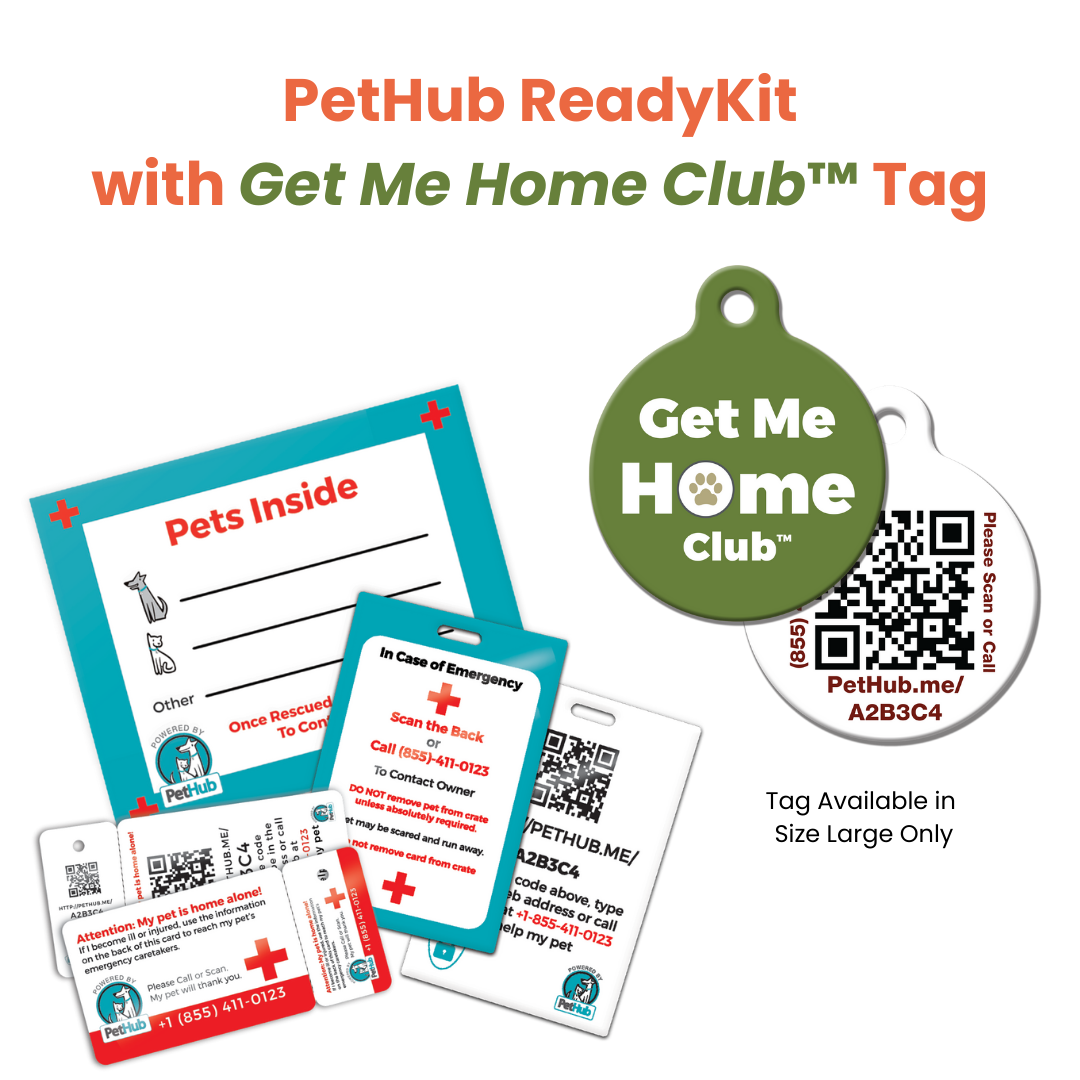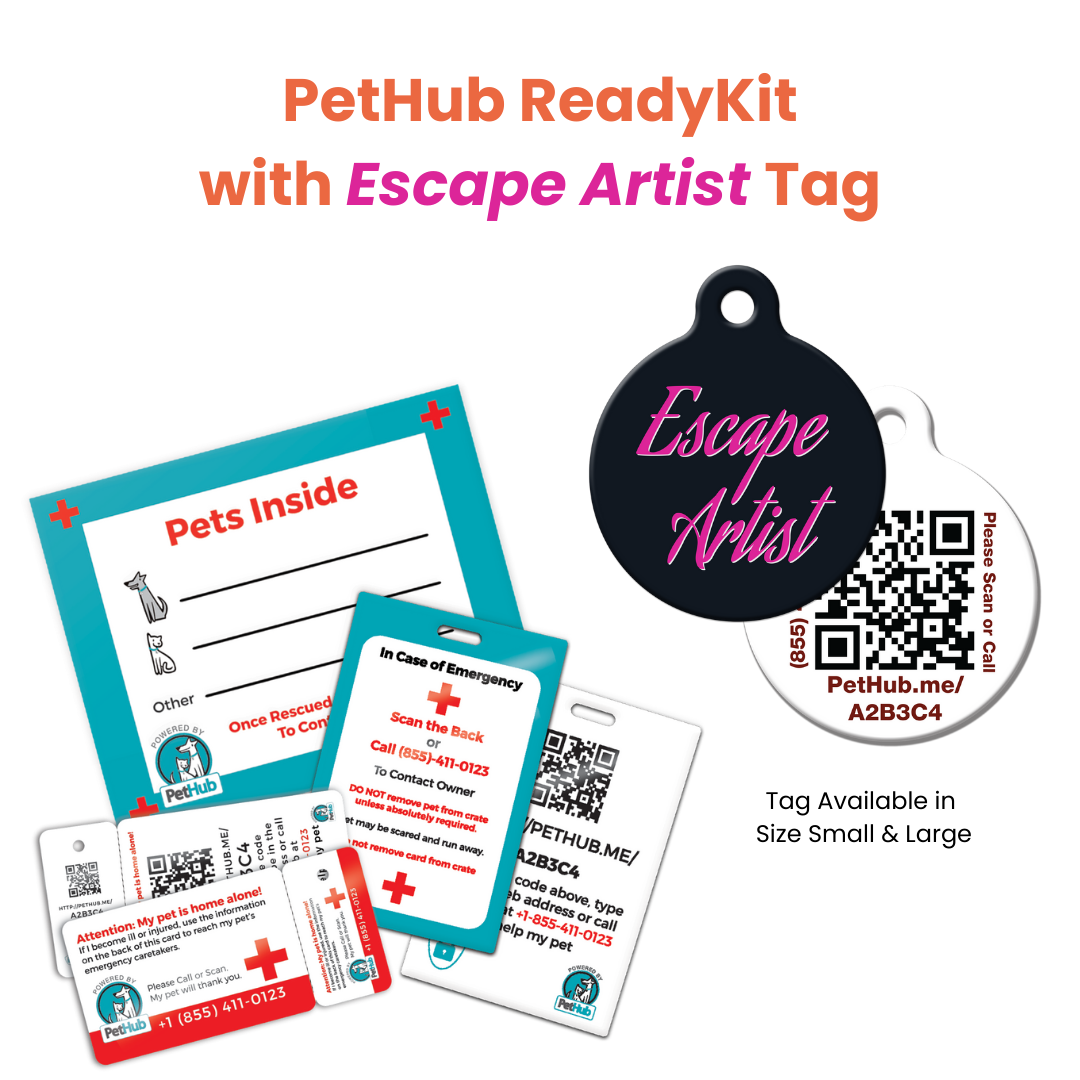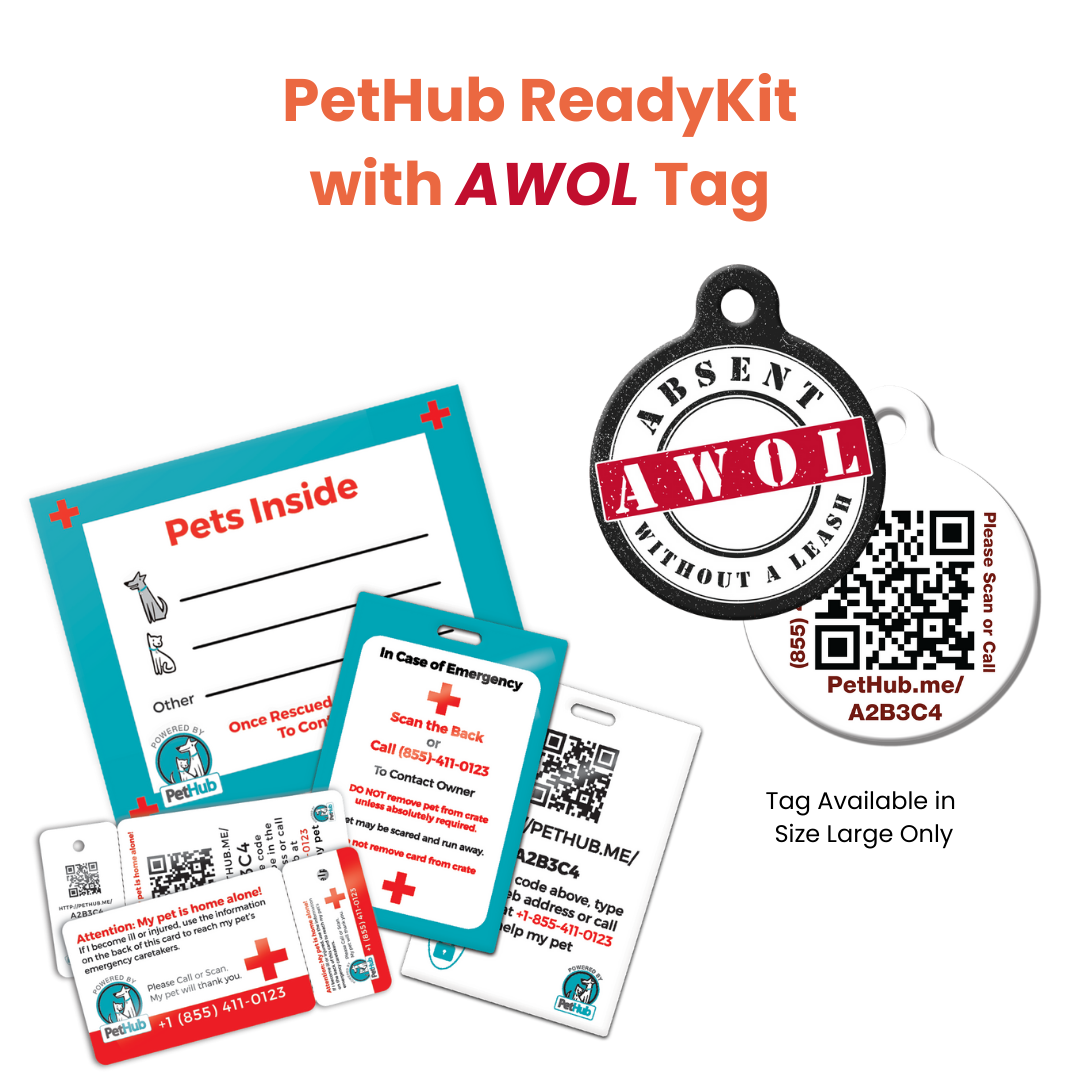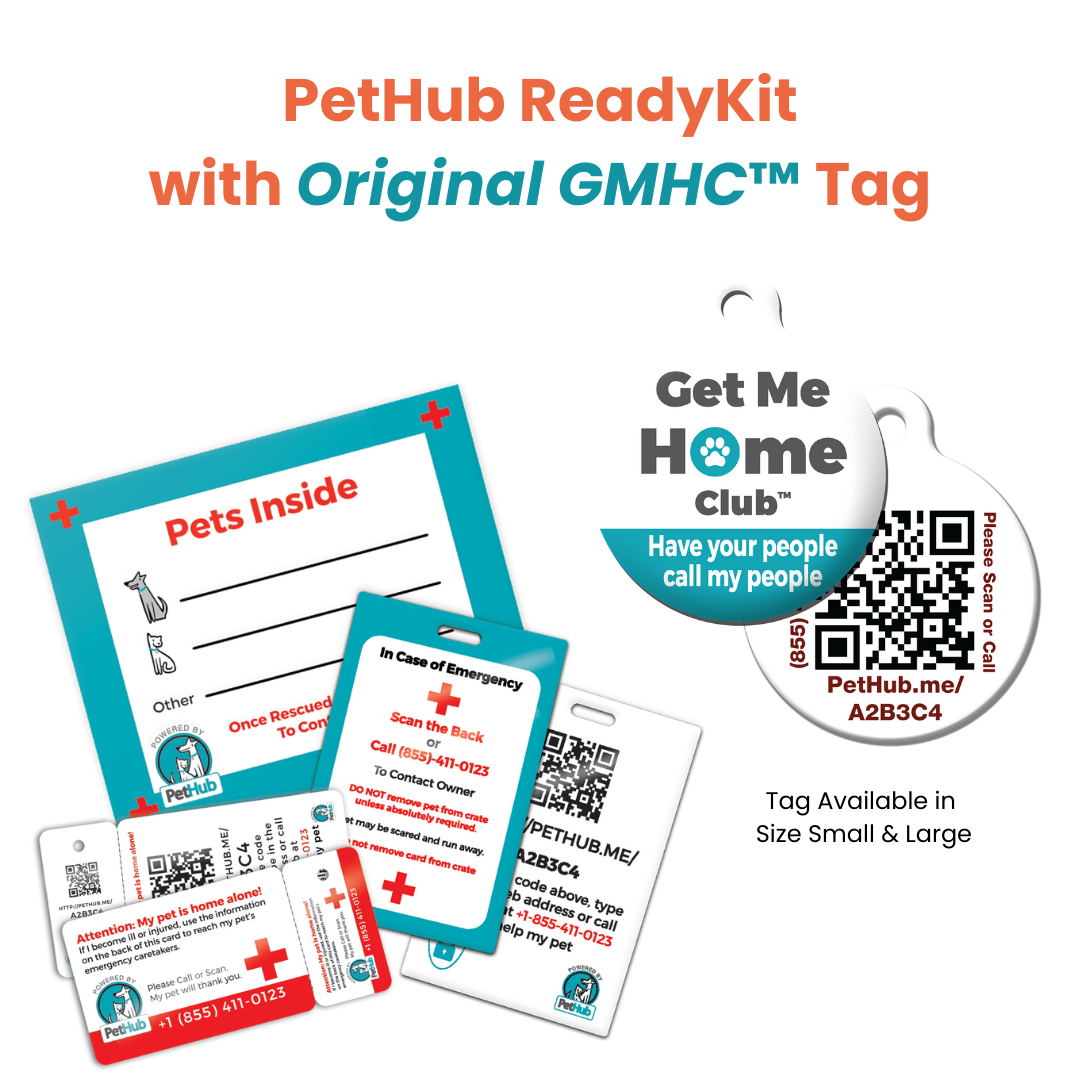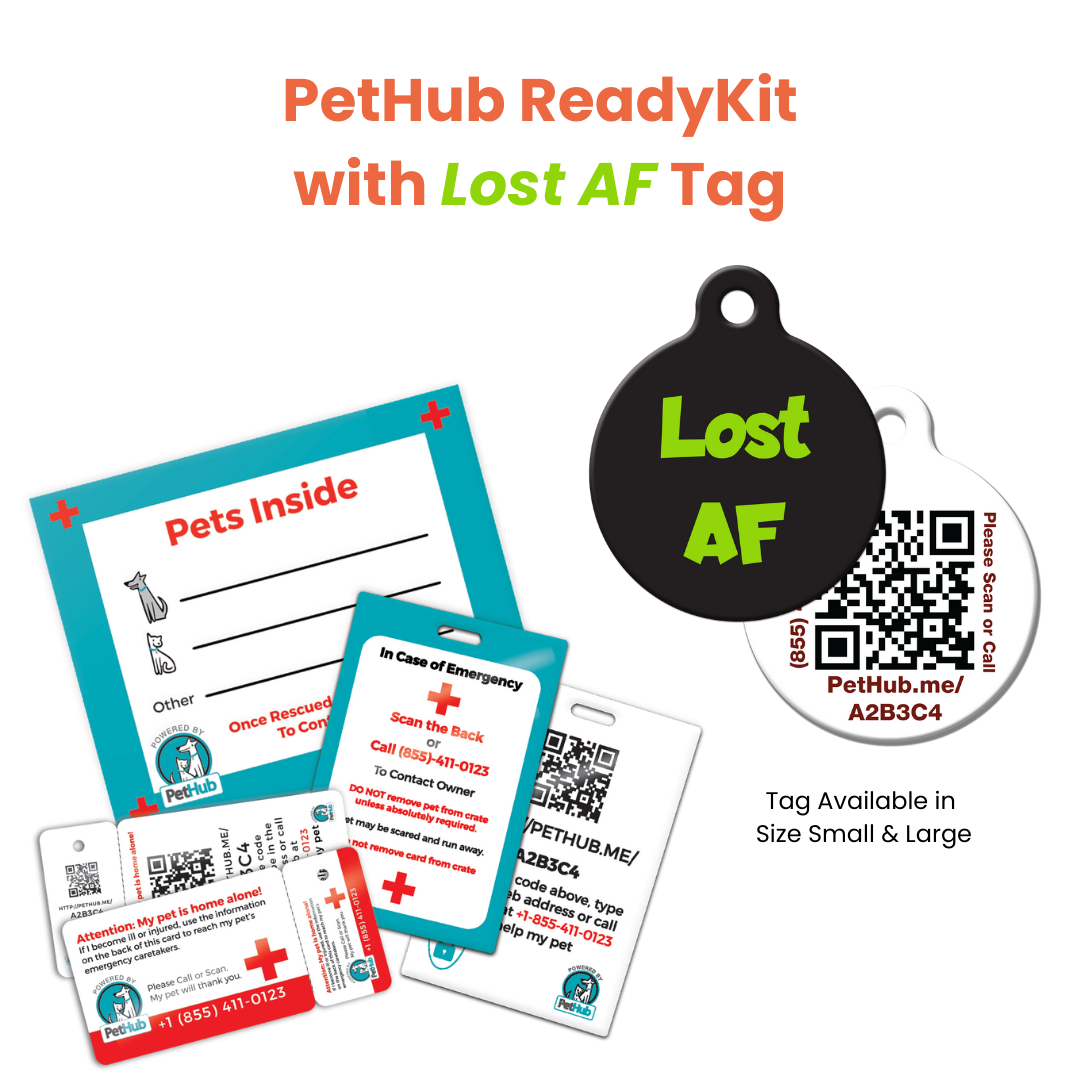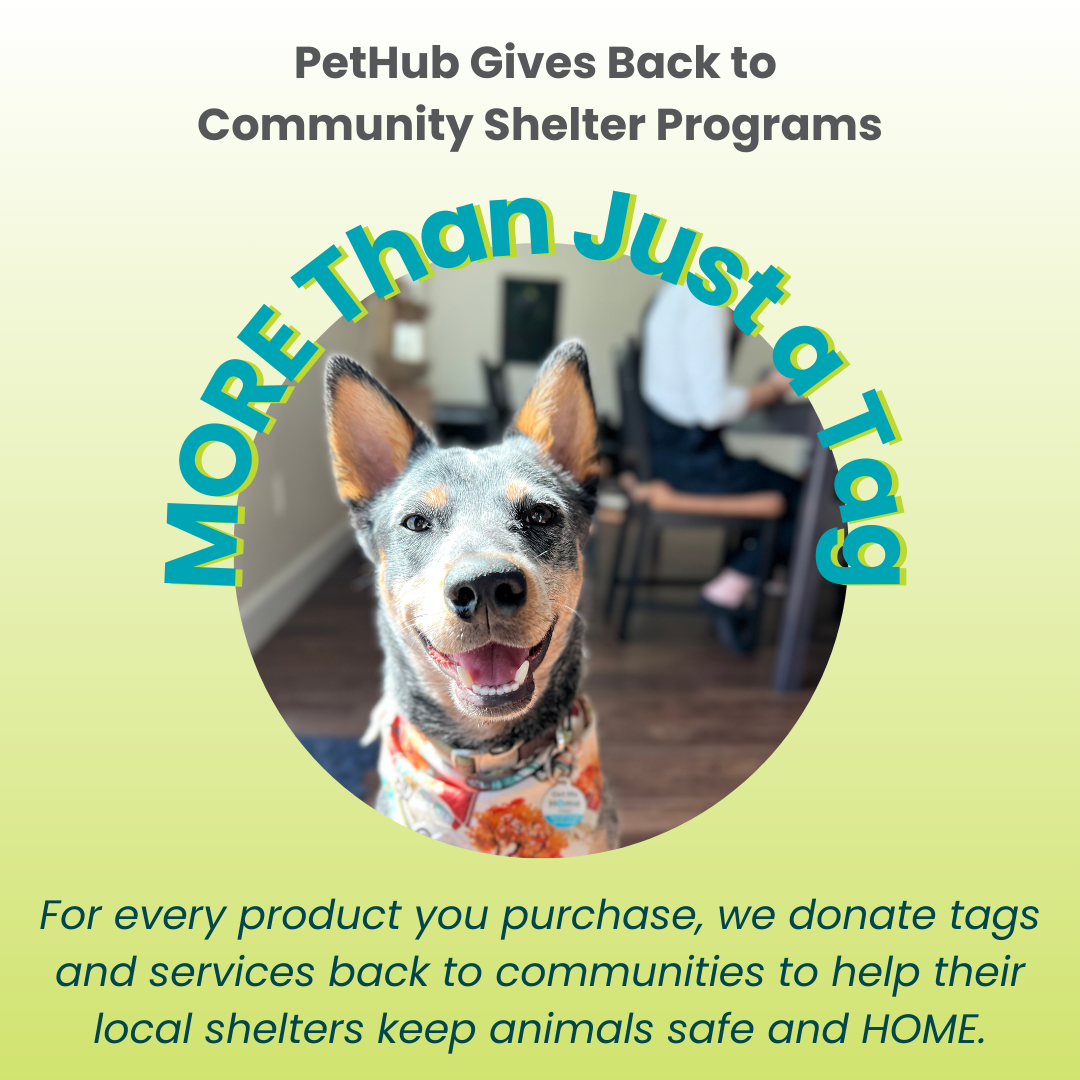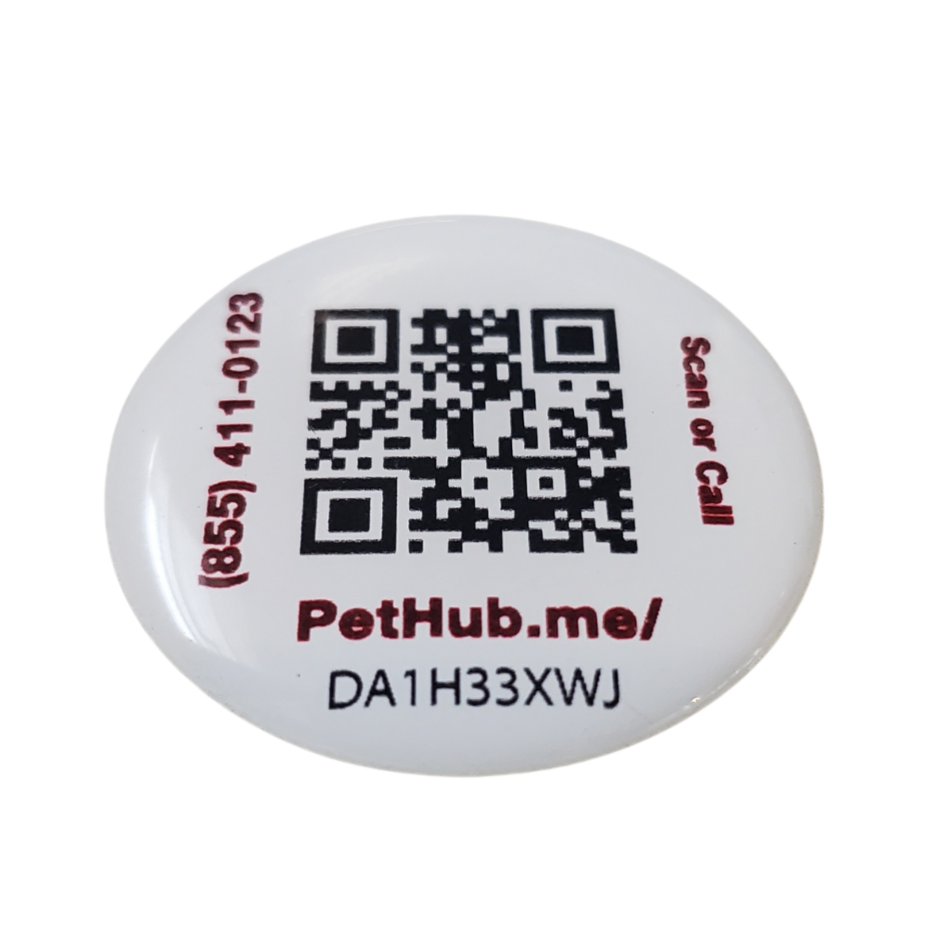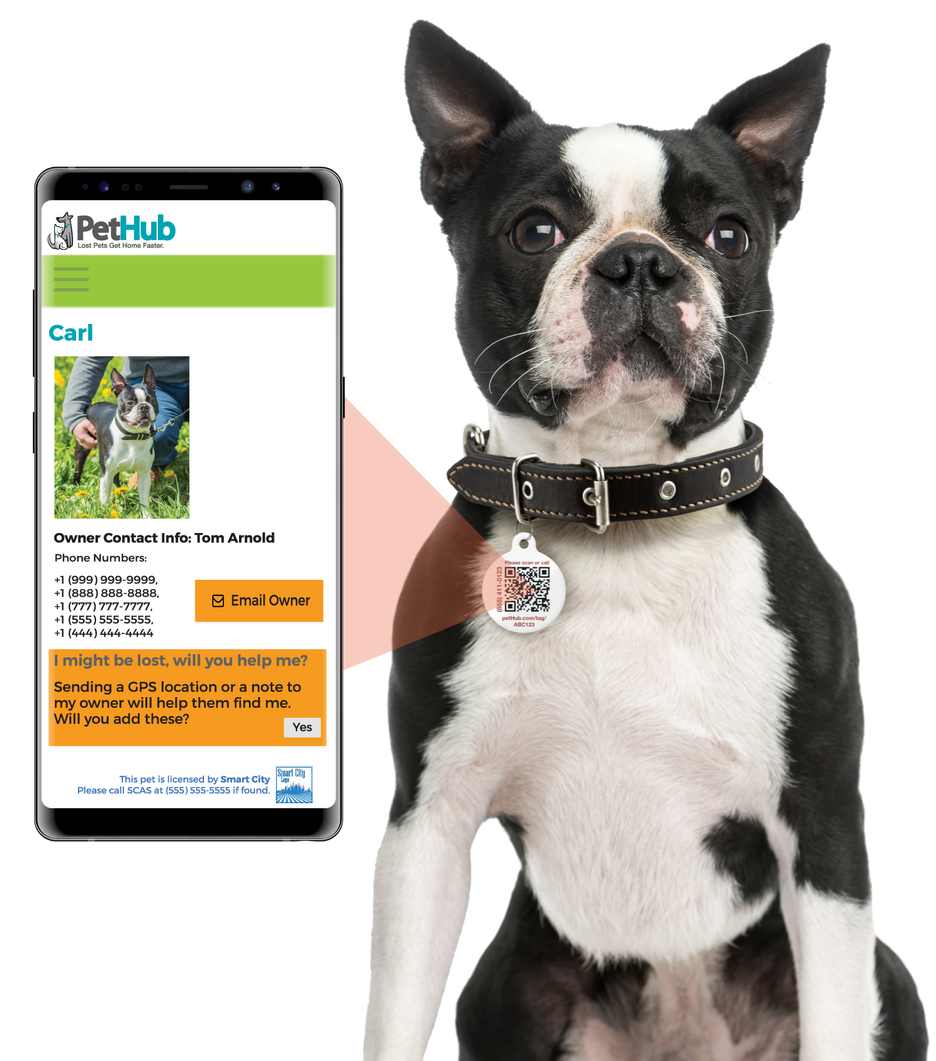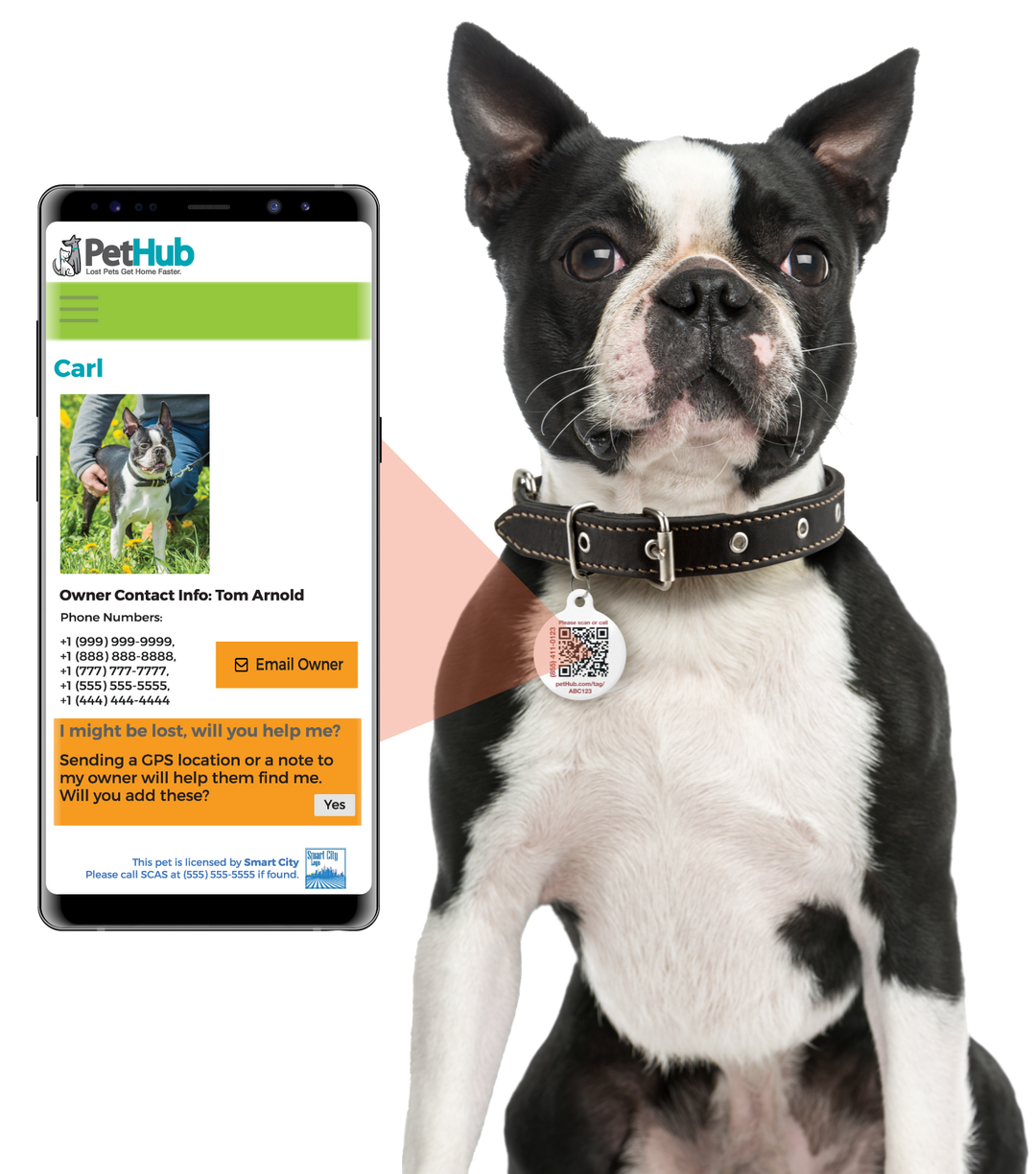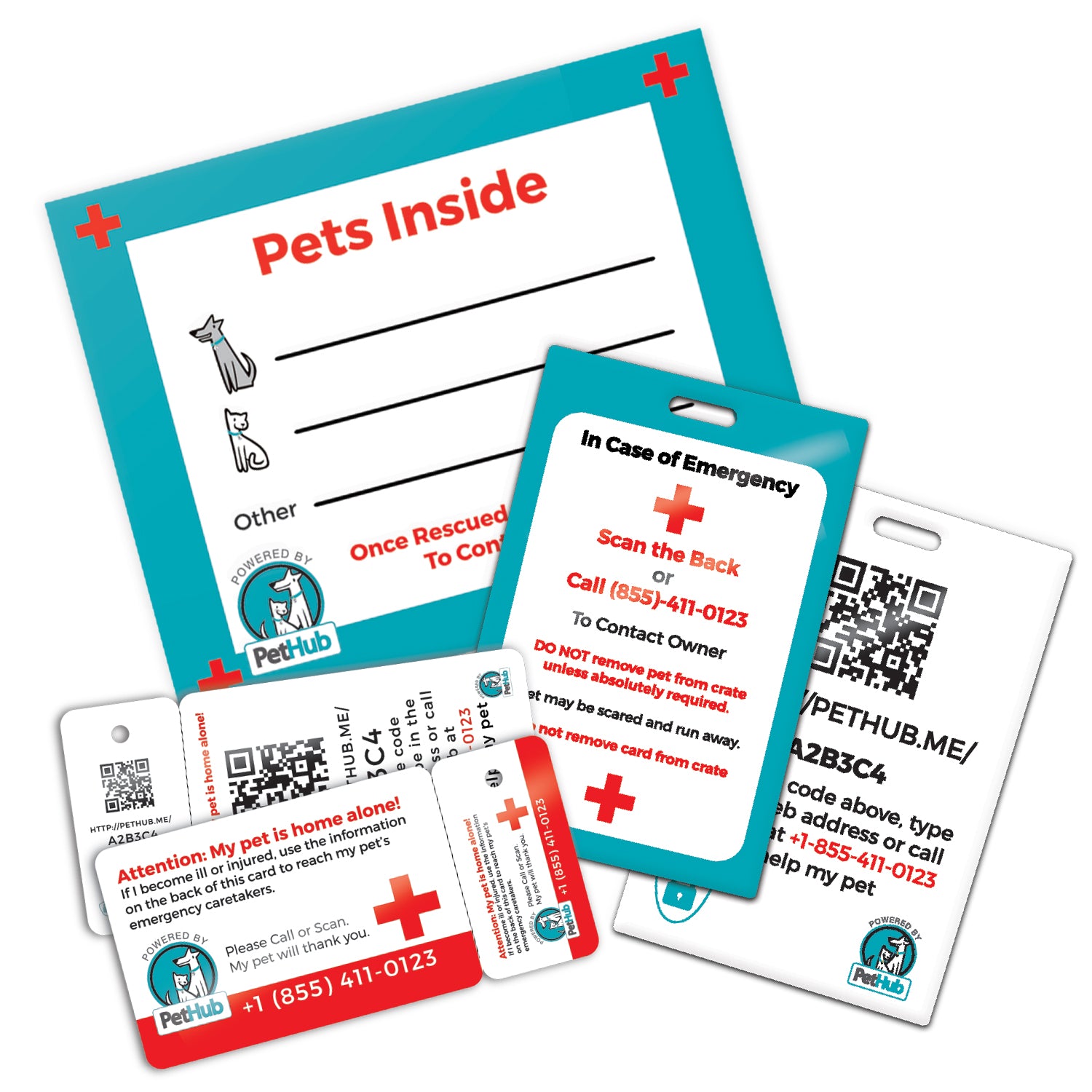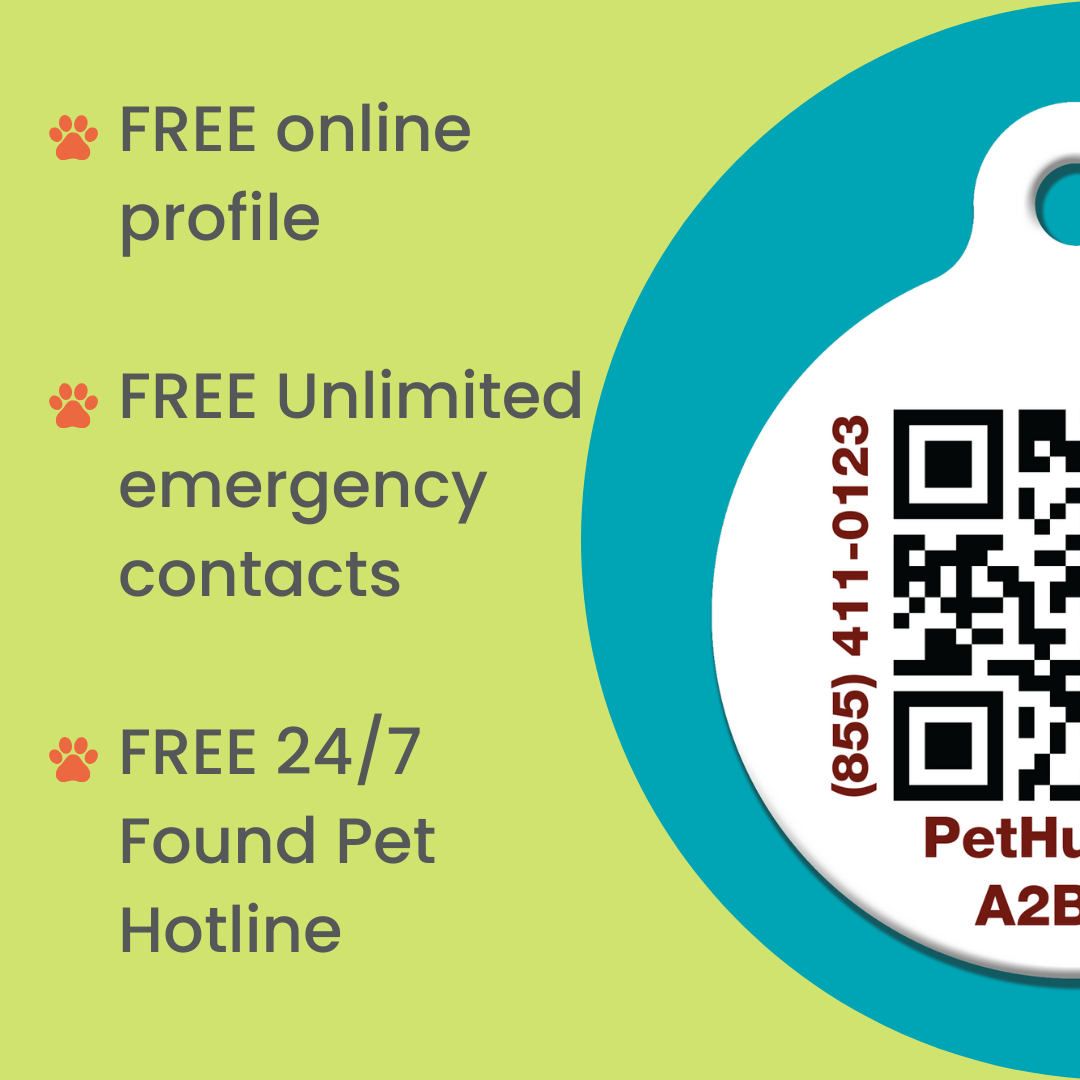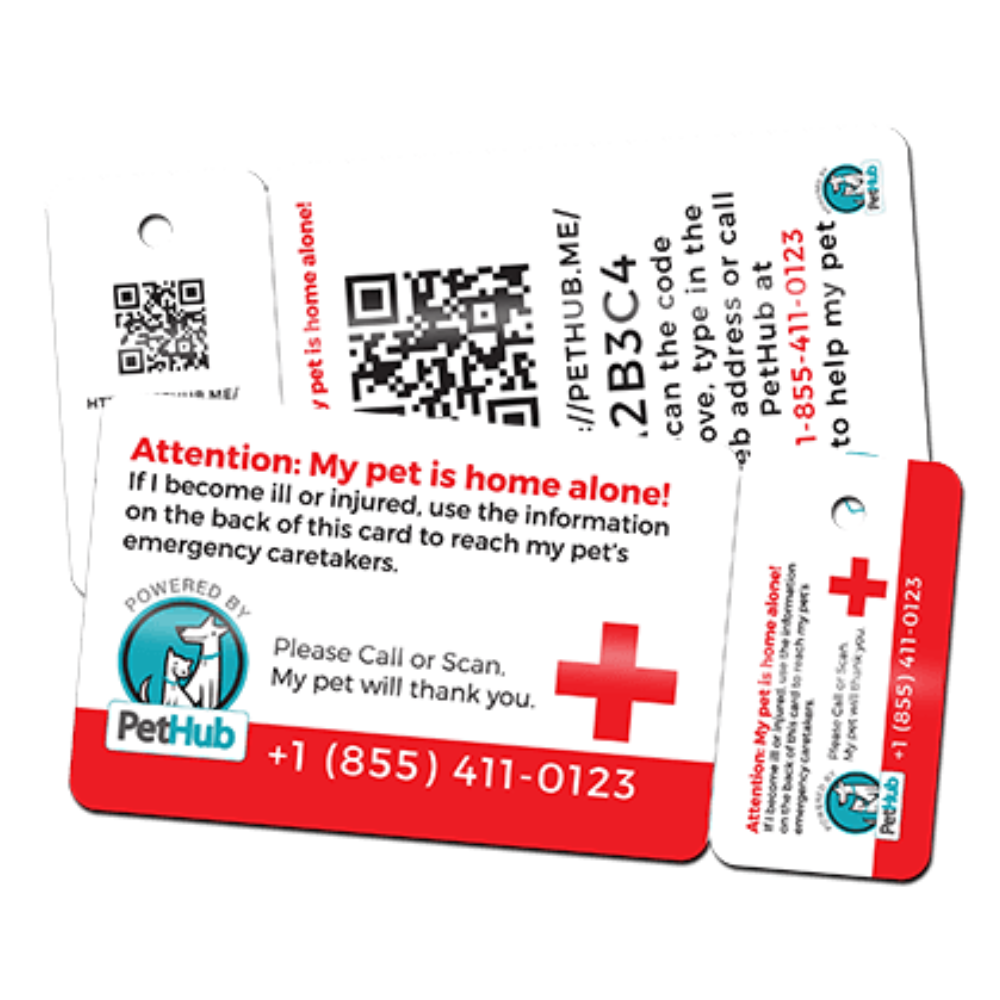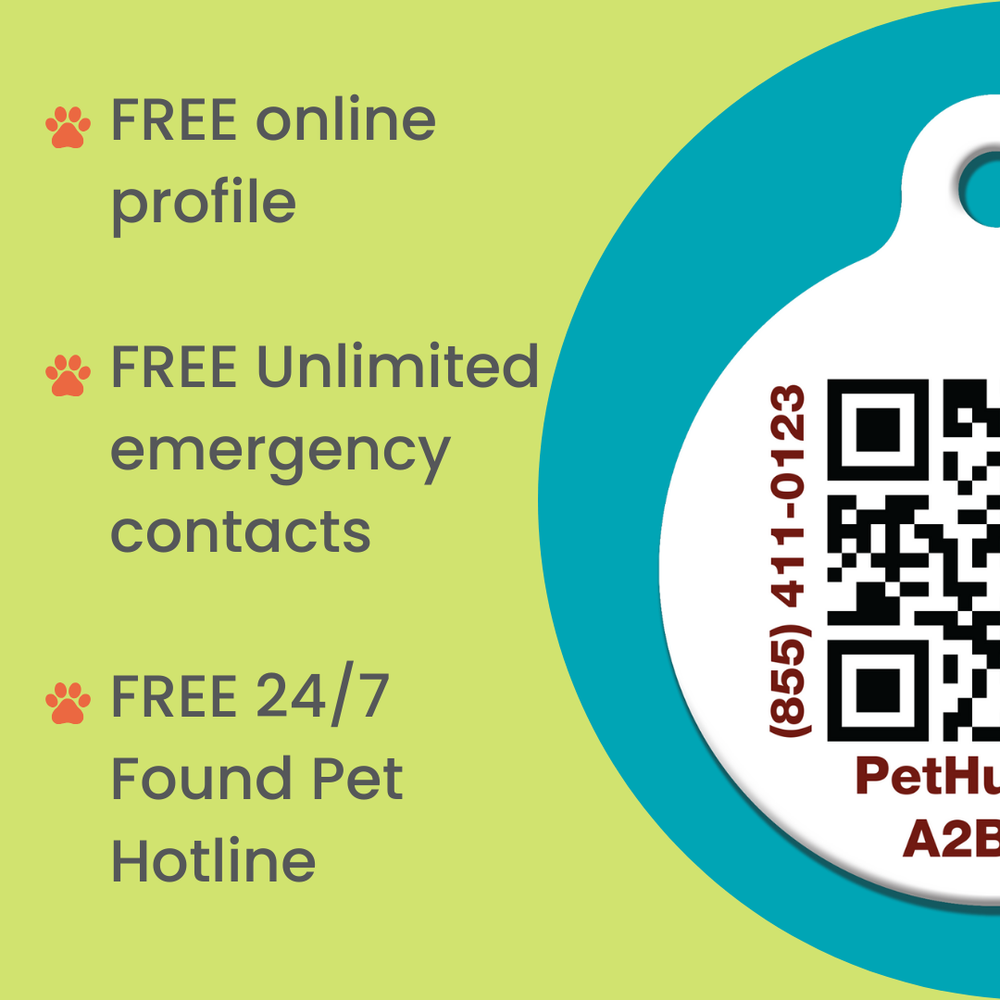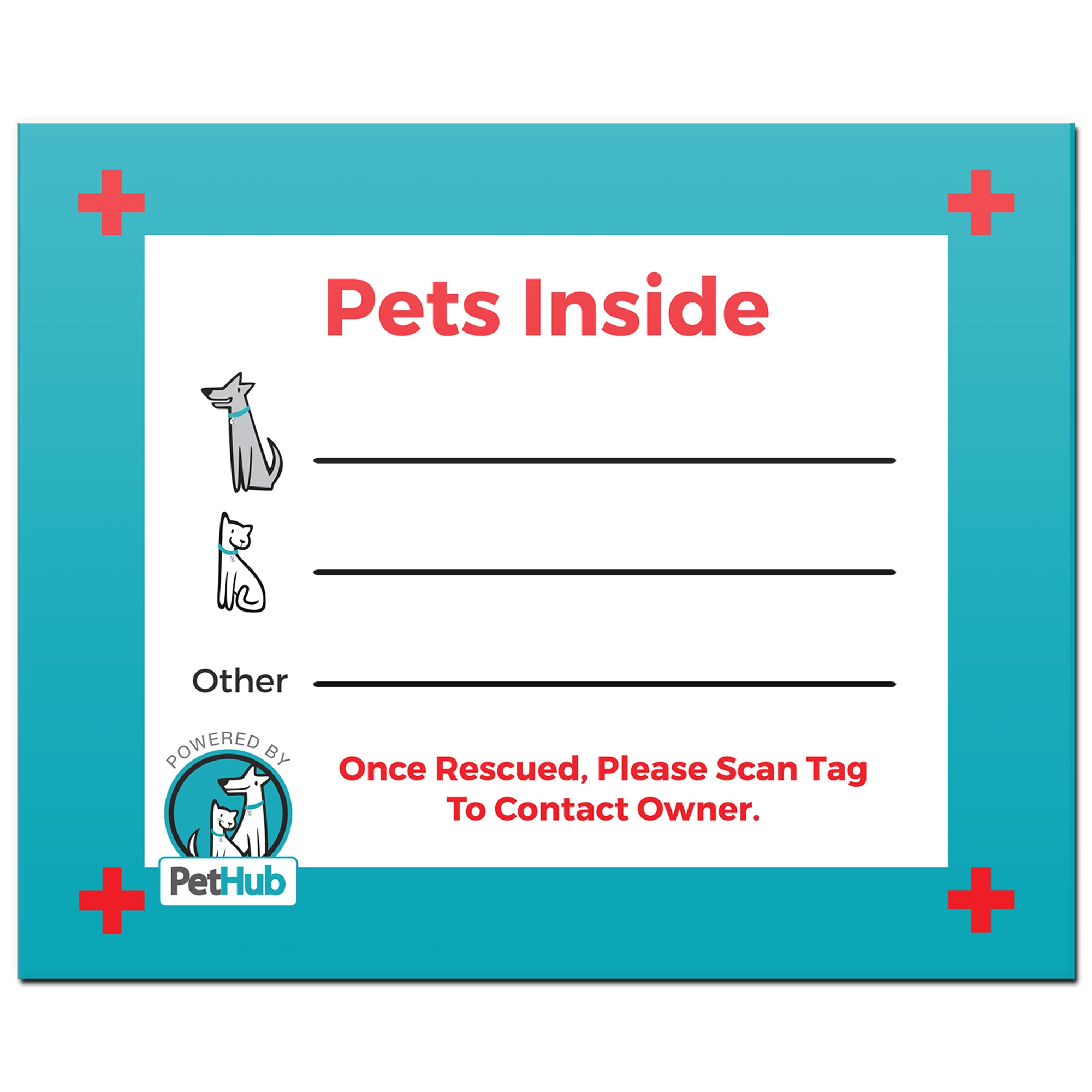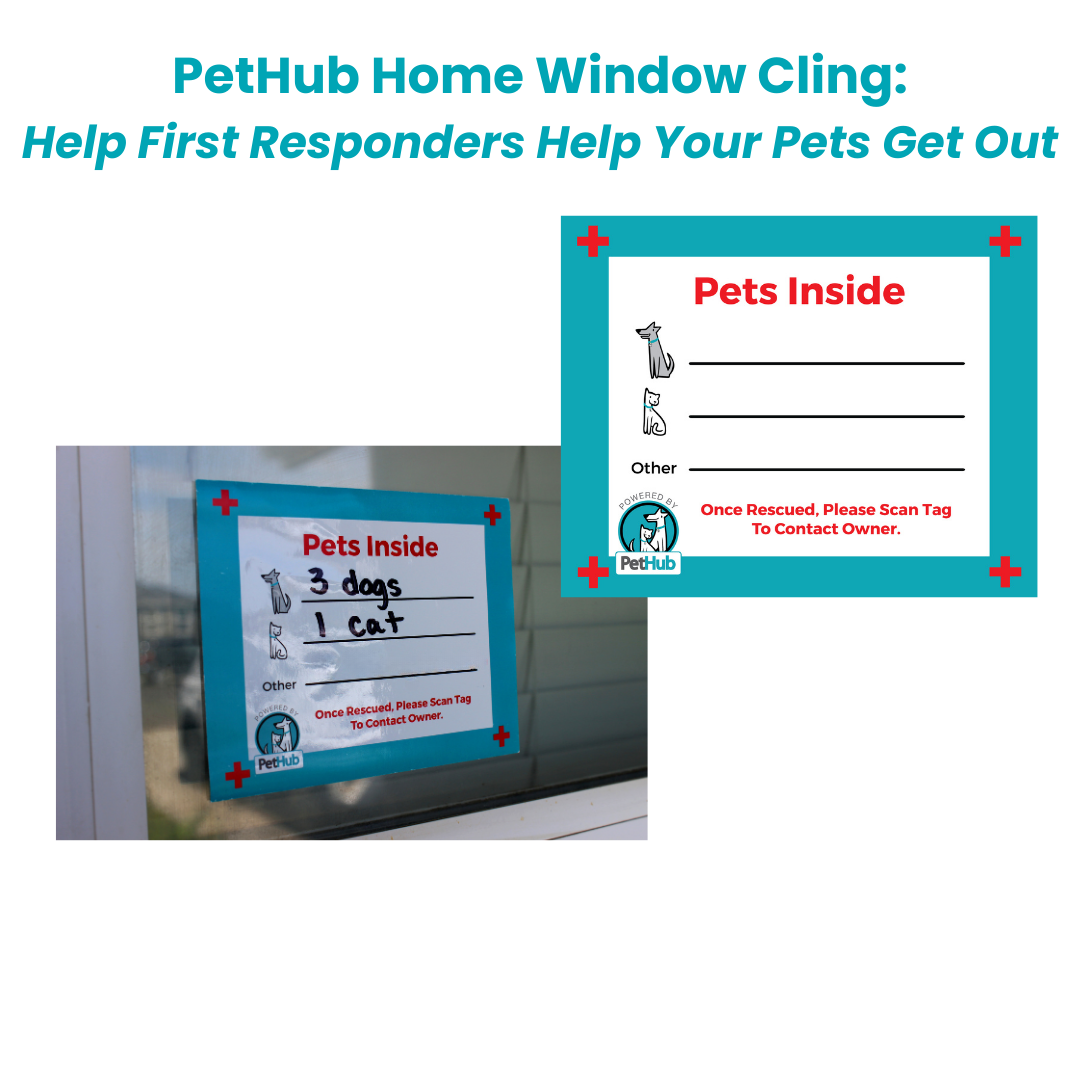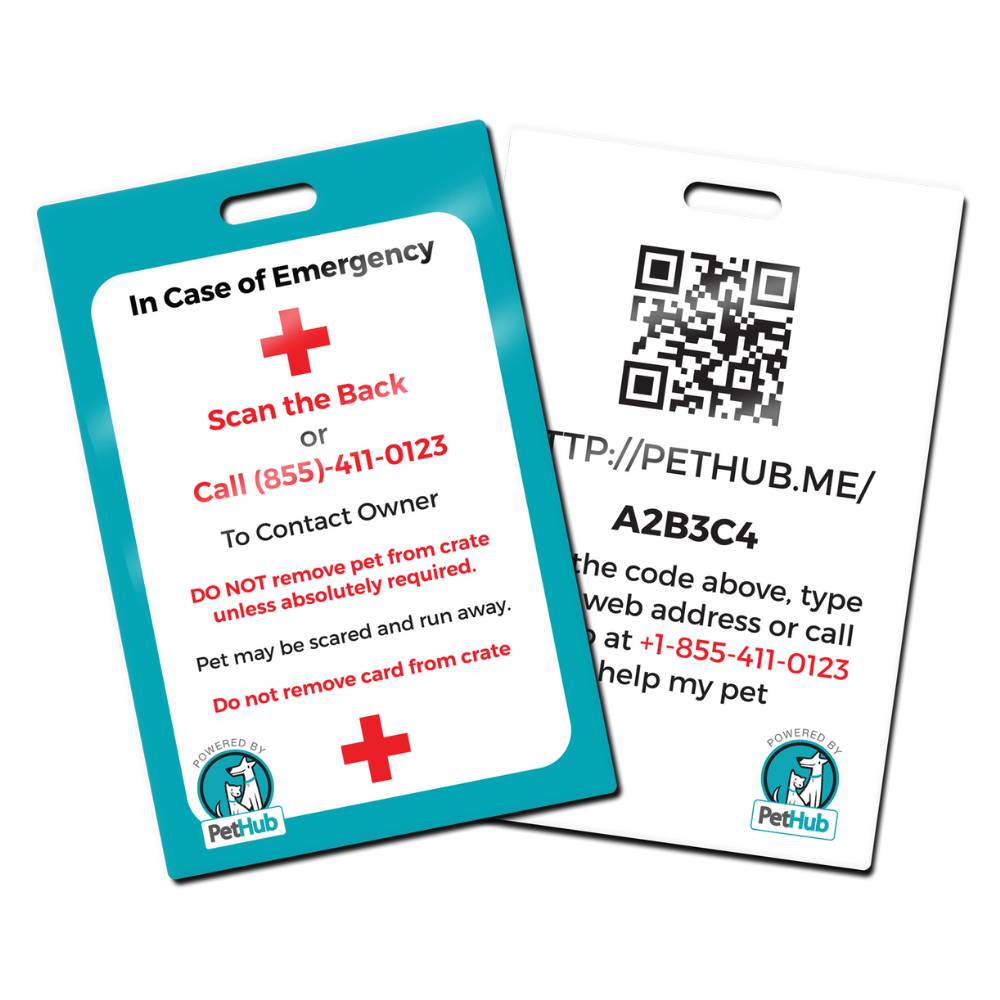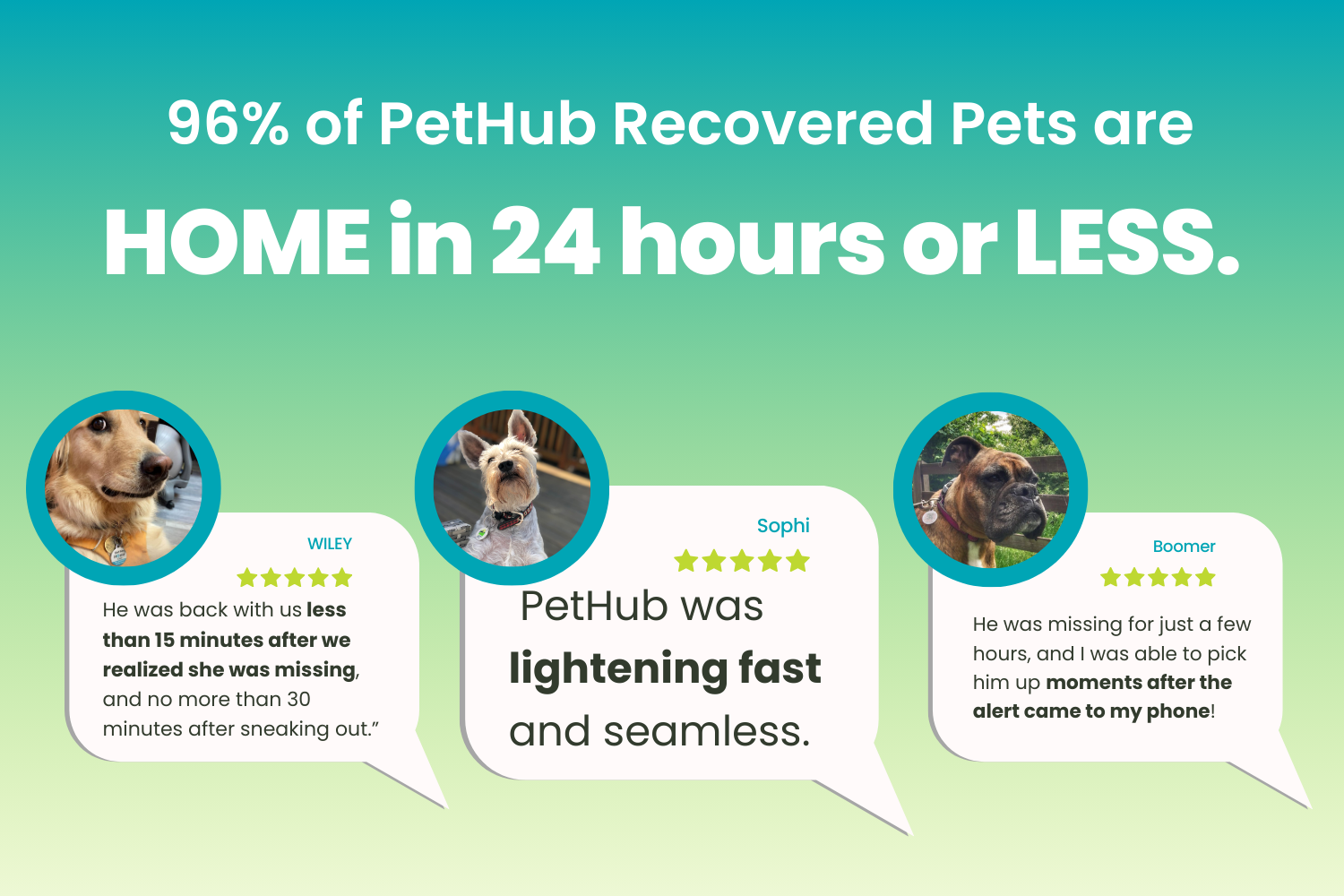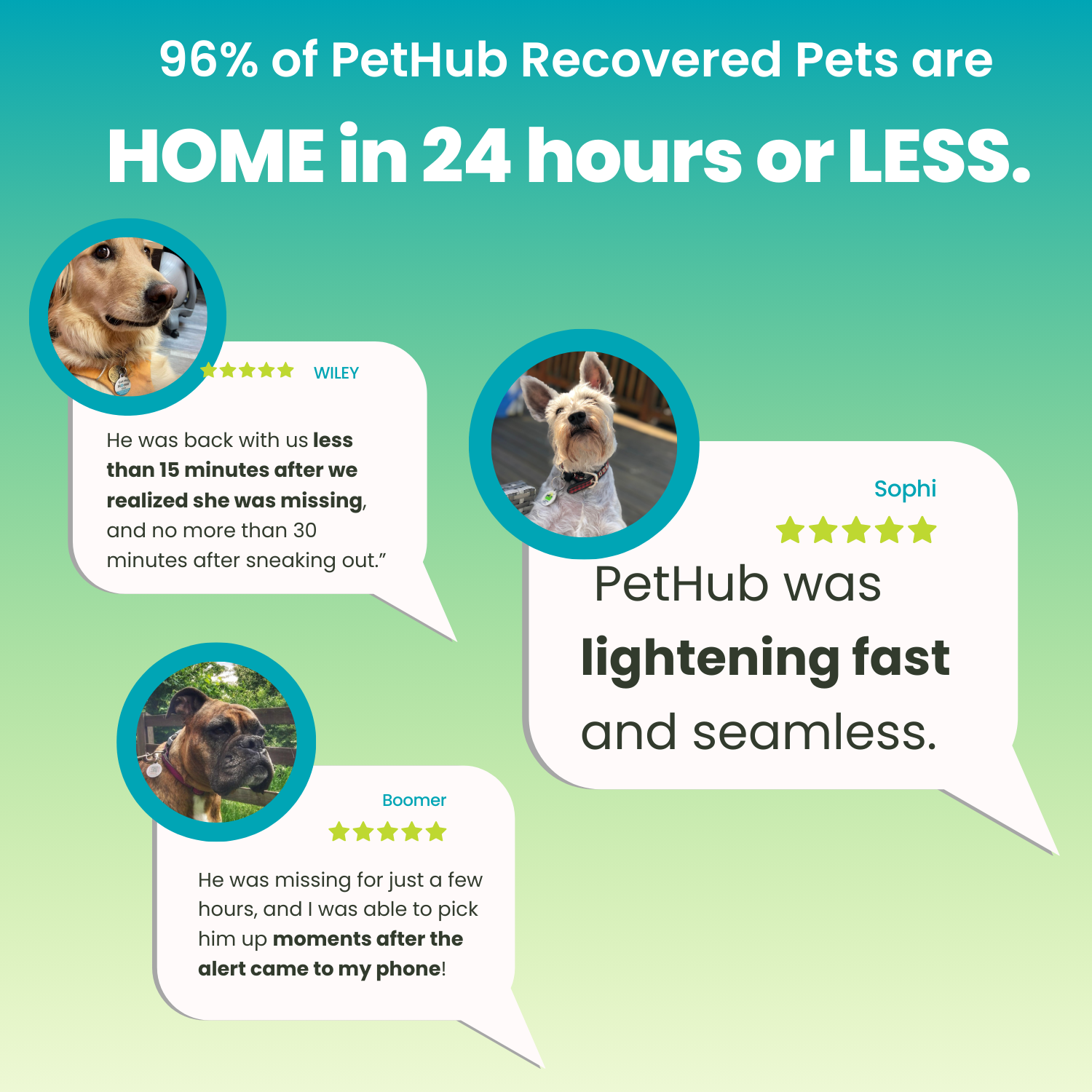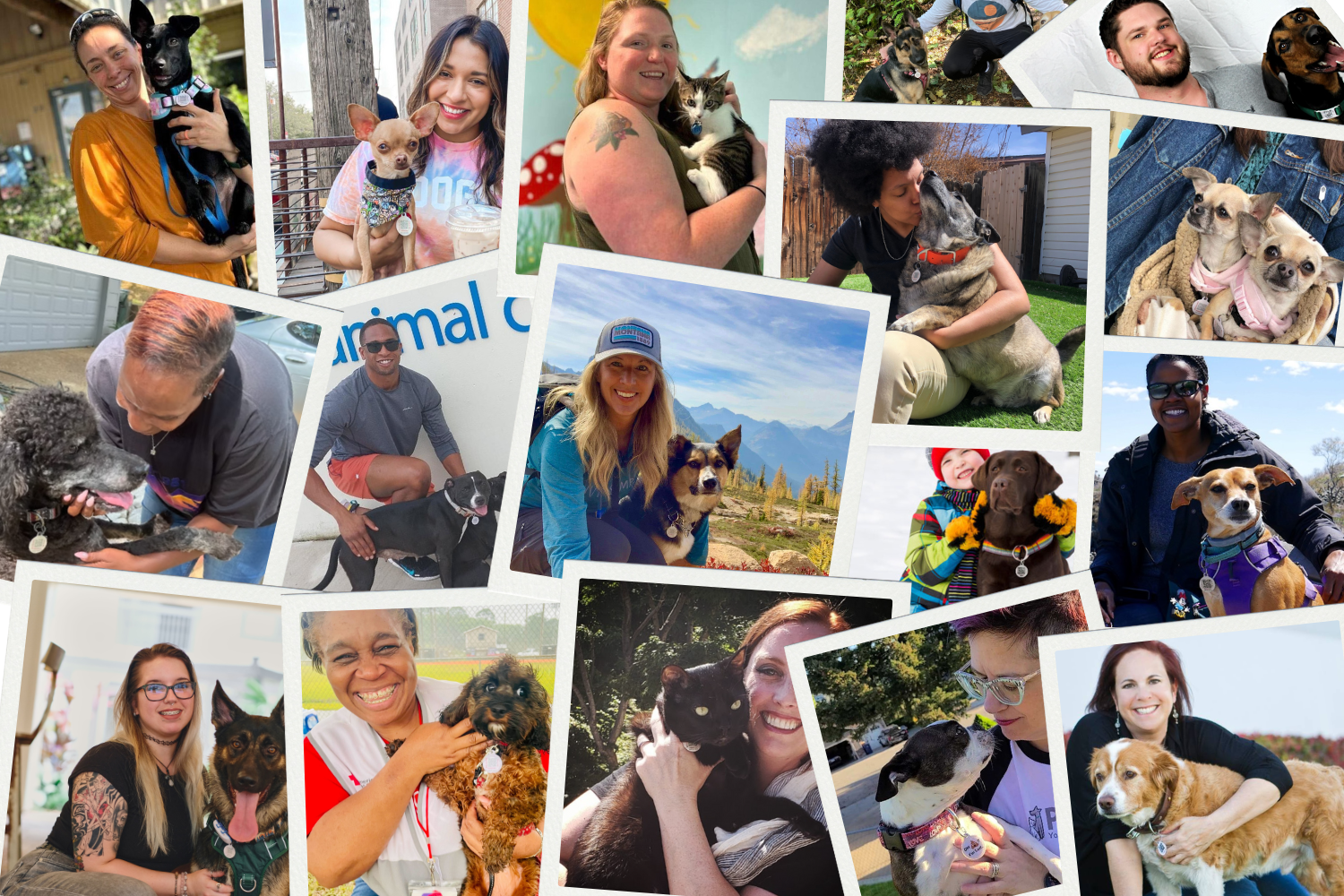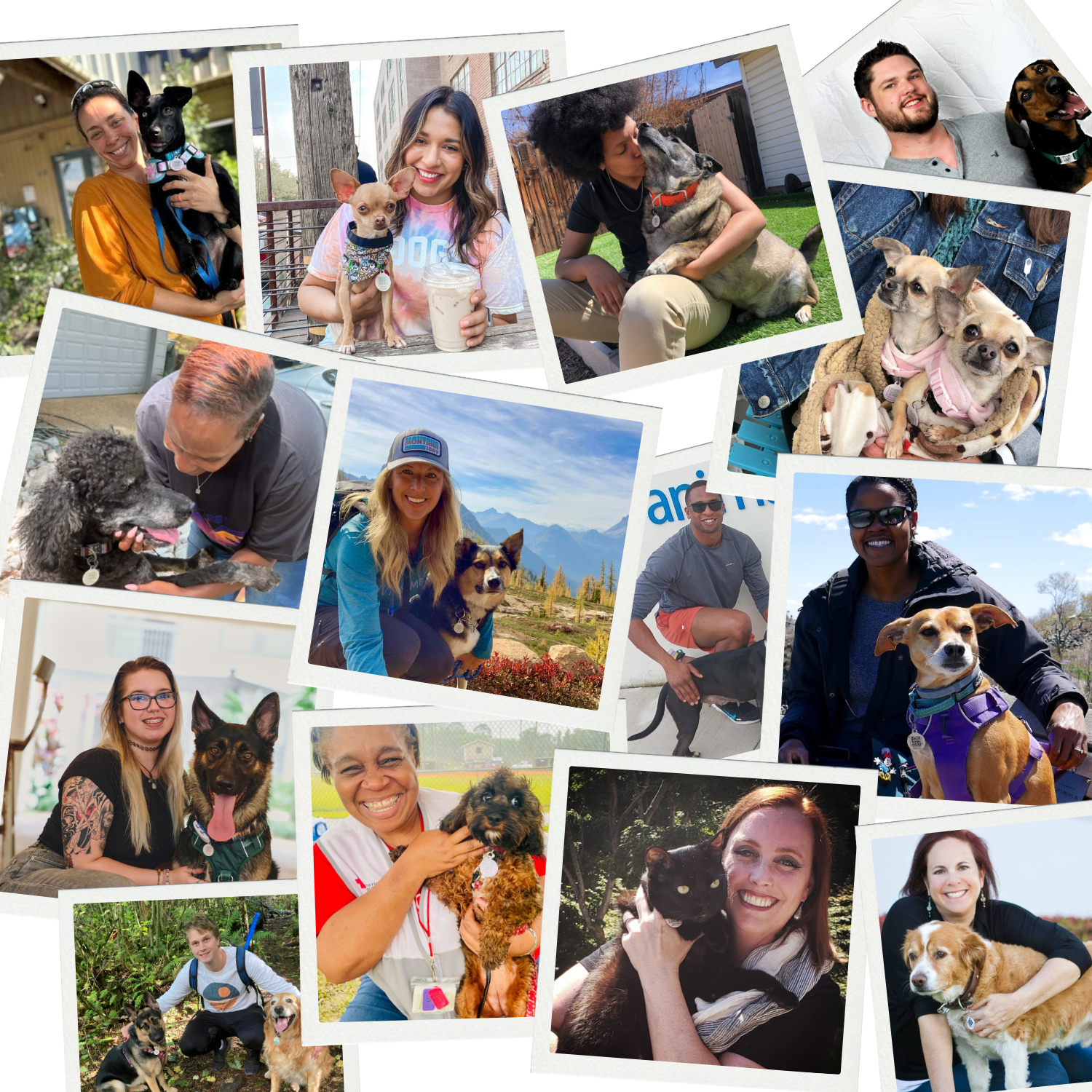(a.k.a. How Not to Totally Freak Out When the Sky is Falling)
When the unexpected happens, your pets depend on you
Wildfires, floods, hurricanes, ice storms, zombie raccoons… okay, maybe not that last one. But disasters come in all shapes and sizes, and they usually don’t RSVP before crashing the party. Sadly, pets often pay the biggest price: after Hurricane Katrina, more than 250,000 pets were displaced, and, by only about 20% of dogs and less than 5% of cats ever made it home. Ouch.
Despite these types of disasters proving that they can be devastating for pets, the ASPCA reports that 83% of pet owners live in areas at risk of disasters, but fewer than half have a plan.
Here’s the good news: with a little preparation (and a lot of love), you can keep your pets safe, calm, and back in your arms faster than you can say “where’s the leash?!”
Meet your secret weapon: the PetHub ReadyKit 👜🐾

If disaster strikes, you don’t want to be running around the house throwing kibble in a grocery bag and hoping for the best. That’s where our ReadyKit comes in. Think of it as your pet’s go-bag, minus the stress sweat:
- Wallet Cards – Small but mighty, these link to your pet’s PetHub profile so your emergency contacts and care instructions stay always up-to-date.
- Crate & Carrier Cards – Big, bold, and scannable, they shout important info to responders even if WiFi and cell towers are taking a nap.
- QR ID Tag – A rugged tag that connects finders to your pet’s full profile (and to you), cutting reunion time from days to hours.
-
Window Cling -- Easy to place notification, that's super-clingy (just like your velcro doggo) that lets first responders know if pets may be trapped inside your home.
Unlike sticky notes taped to a kennel, these tools don’t go out of date and won't disintegrate in a rainstorm. Update your PetHub profile once, and boom—every card and tag is current.
What to Do Before, During, and After an Emergency
Let’s be real: the middle of an evacuation is not the time to wonder if you left the cat’s meds on the counter. Prepping now means you’re not scrambling later.
- ID is non-negotiable. Collars, microchips, and QR tags are the holy trinity of pet identification. (And yes, your pet can rock all three.)
- Pack a go-bag. Food, water, meds, leashes, carriers, and a first aid kit. Bonus points if you stash a toy or blanket that smells like home.
- Get your papers in order. Vaccine records, prescriptions, and a recent photo. With PetHub, you can store all of this digitally, so even if paper copies get soggy, your info is safe.
- Make a plan. Know where you can go—pet-friendly shelters, boarding facilities, Aunt Carol’s basement. Create a buddy system with a neighbor in case you’re not home.
- Practice, practice, practice. Evacuation drills aren’t just for school kids. Load your pet into the carrier, take short practice drives, and run through your household plan so everyone knows their role.
During an emergency: keep calm and carry your ReadyKit
If you need to leave, bring your pets. Period. “They’ll be fine at home” is famous last-words territory. And don't be a hero and try to stay home with your pets (just putting your whole family at unnecessary risk) -- pack up the pack, hit the road and get to safety. Use local social media to help find pet-friendly shelters and support.
- Evacuating? Grab your ReadyKit, your go-bag, and your pets. Go.
- Sheltering in place? Pick a safe room with few windows. Clear out toxins and block sneaky hidey-holes where cats could vanish. Keep pets leashed, crated, or close by so they don’t bolt if nerves kick in.
- Stay healthy. Flood water, other stressed animals, and mosquitoes can carry all sorts of nasties (rabies, leptospirosis, ticks, oh my). Keep pets contained, use preventatives, and avoid stagnant water like it’s a giant toilet bowl.
After an emergency: recovery mode
Coming home after a disaster isn’t always a Hallmark moment. Scents and landmarks may have changed, and your normally chill dog might act like a totally different pup.
- Do a hazard sweep before letting pets roam. (Think: broken glass, spilled chemicals, exposed wires.)
- Watch their behavior. Anxiety, aggression, or clinginess are all normal. Give them patience (and maybe a little extra peanut butter).
- Reintroduce food slowly, especially if meals were missed.
- Return to routines ASAP—pets thrive on knowing when dinner’s coming.
-
Comfort, snuggles, and quiet time go a long way.
Pet Emergency Prep Checklist
Identification
☐ PetHub QR ID tag linked to your pet’s profile
☐ Travel Crate Cards on kennels/carriers
☐ Wallet Card/Keychain Card in your purse or wallet, and on your keychain
☐ Microchip with current info
Supplies
☐ 2 weeks of food & water
☐ 2 weeks of medications
☐ Comfort item (blanket, toy)
☐ Waste supplies (bags, litter, pads)
☐ Sturdy leash, harness, and carrier
Documents
☐ Vaccination & medical records (paper + PetHub digital copy)
☐ Recent photo of your pet
Planning & Practice
☐ Identify pet-friendly shelters & boarding options
☐ Create a buddy system with a neighbor
☐ Run evacuation drills with the whole family
☐ Keep PetHub profile up to date
Why preparation is worth it
- 96% of pets with PetHub IDs are home in 24 hours or less when lost.
- A clear plan reduces stress for both pets and people.
- Prepared households are safer for first responders and communities.
The bottom line
Emergencies don’t wait for you to be ready—but your pets don’t have to pay the price. With a PetHub ReadyKit, a stocked go-bag, and a practiced plan, you’ll know your fur kids are safe, secure, and just a little less freaked out when life throws a curveball.
Because at the end of the day, your pets don’t care if it’s a flood or a fire—they just want to come home to you. ❤️

